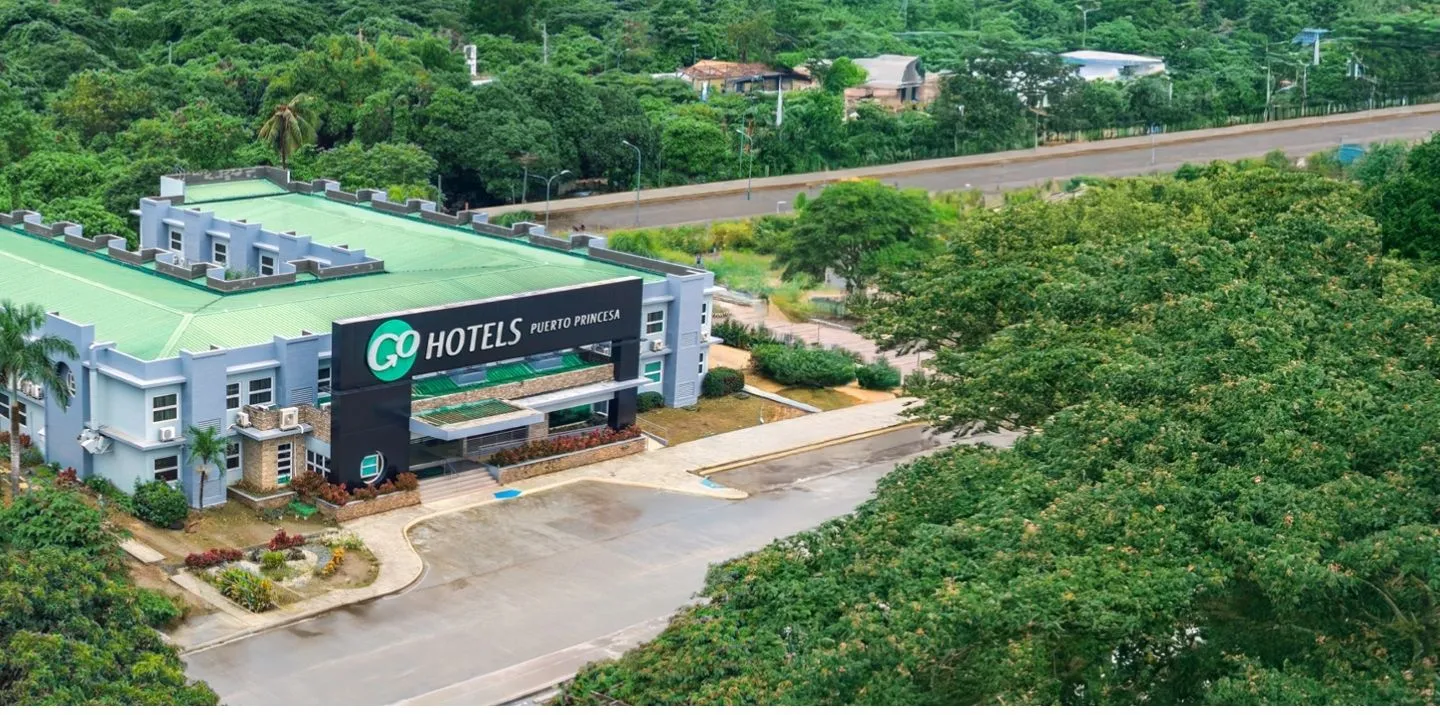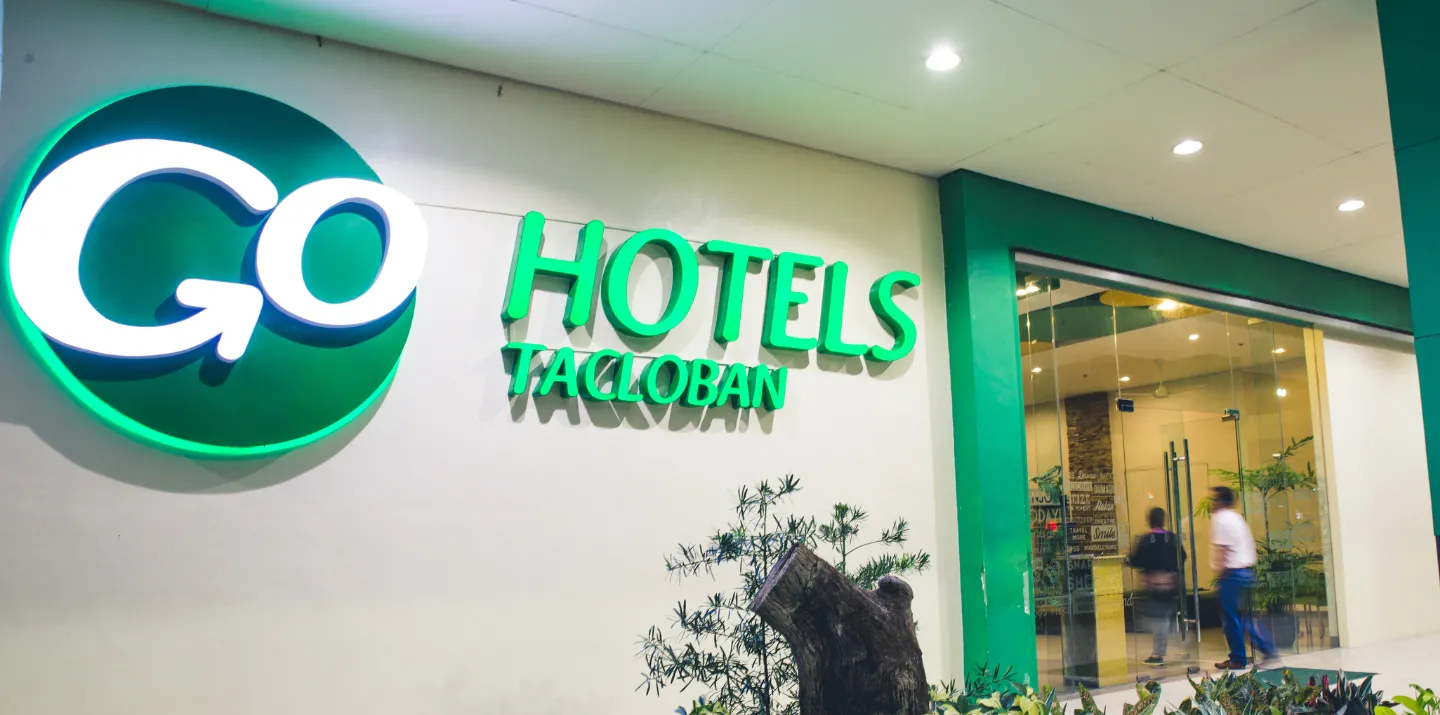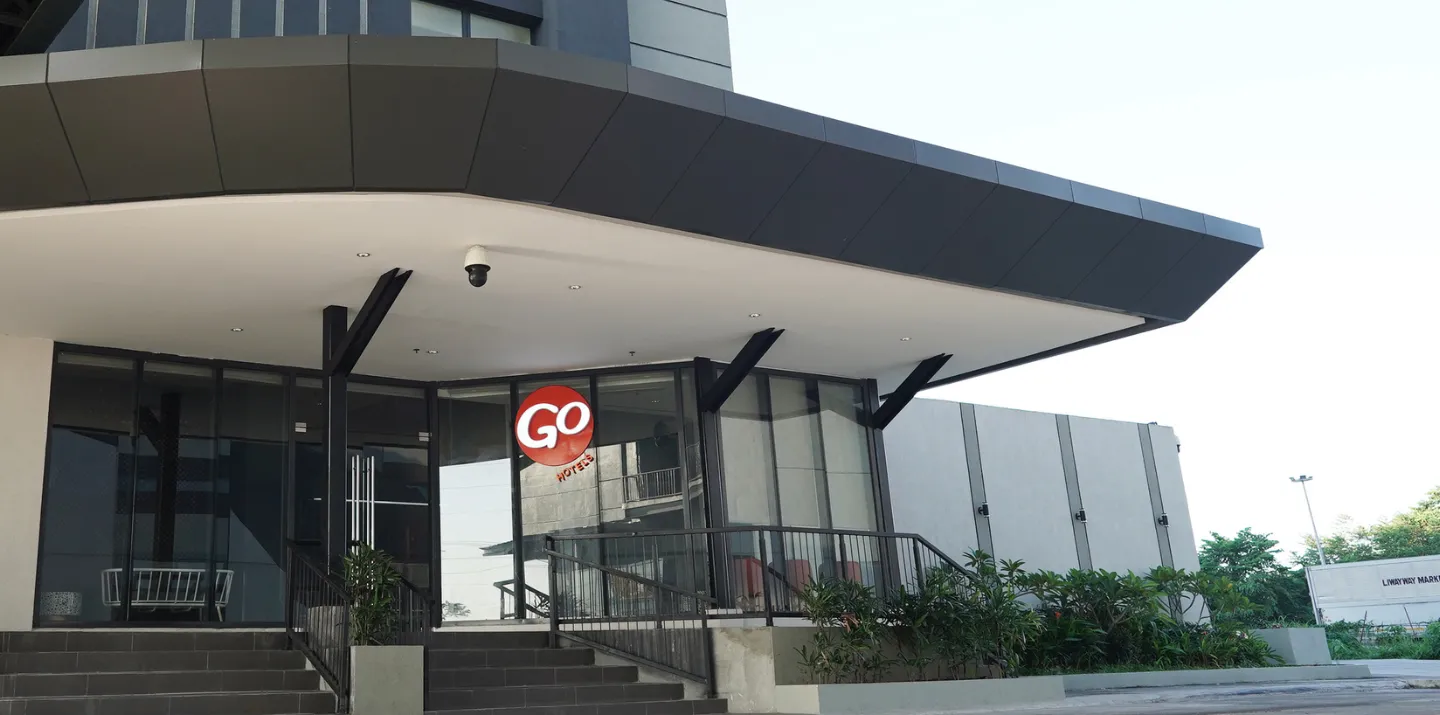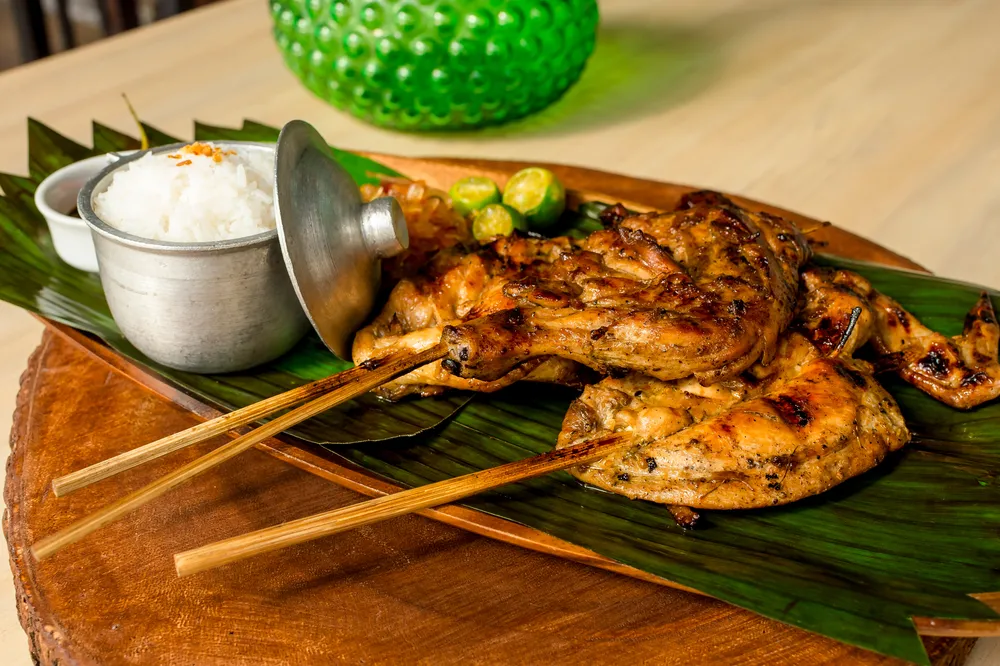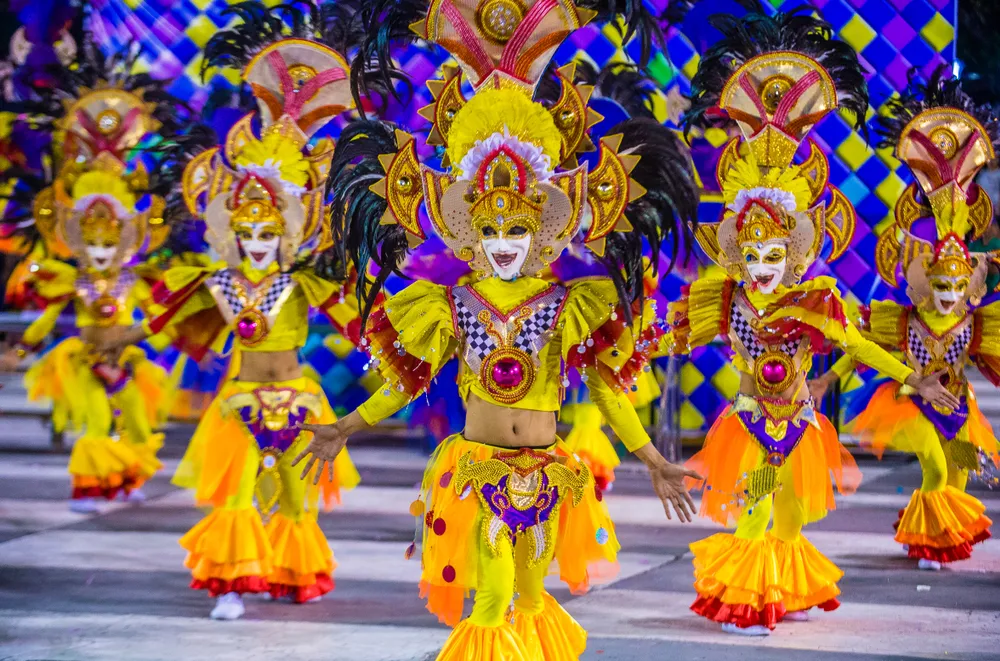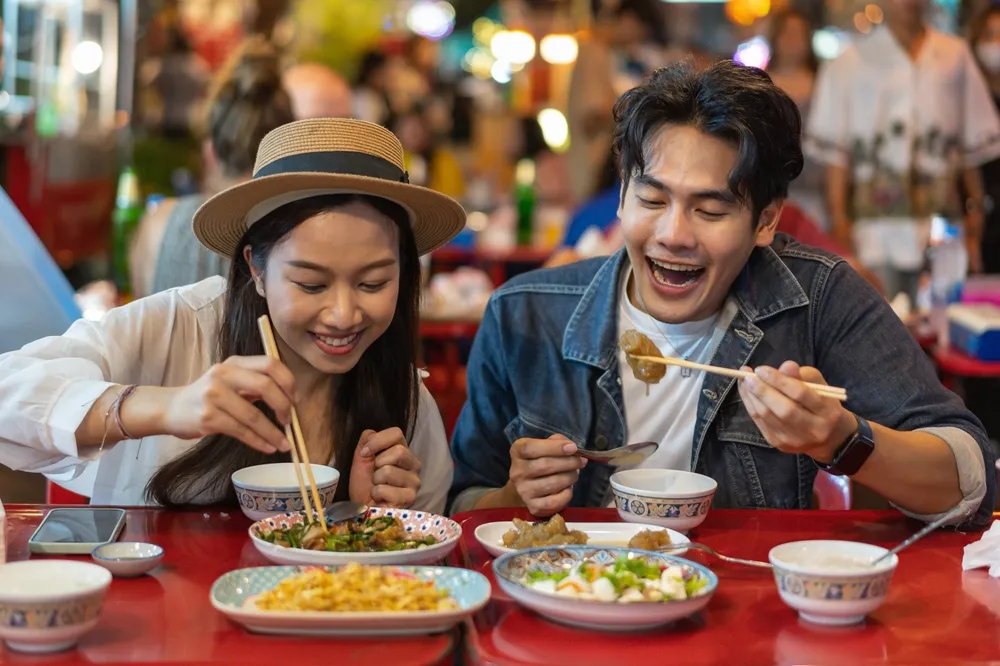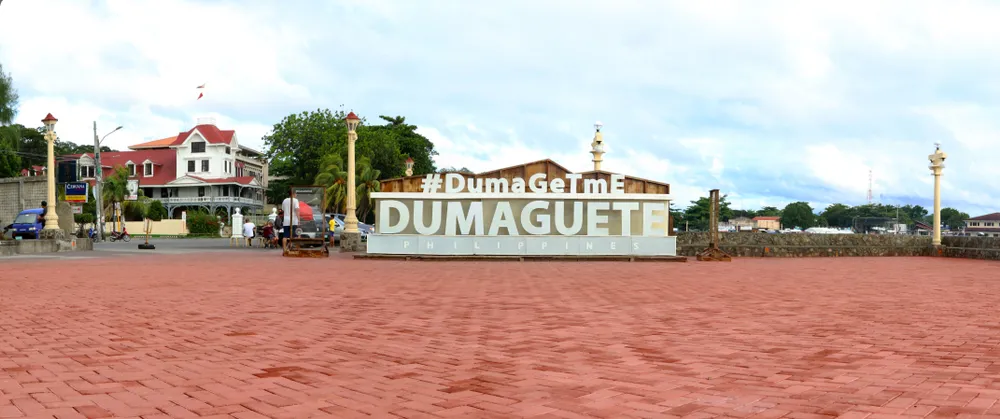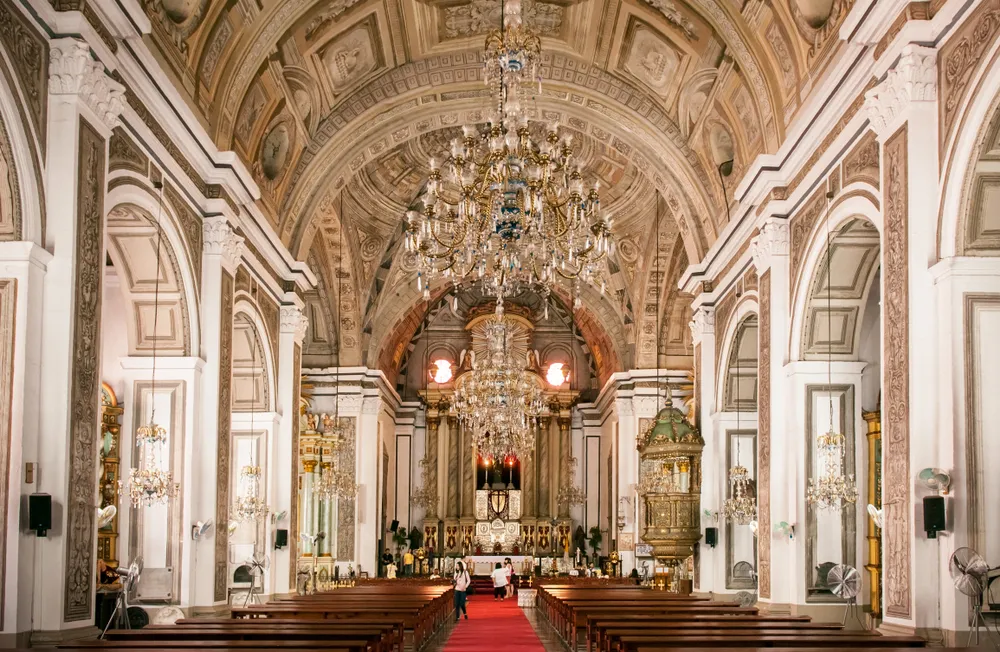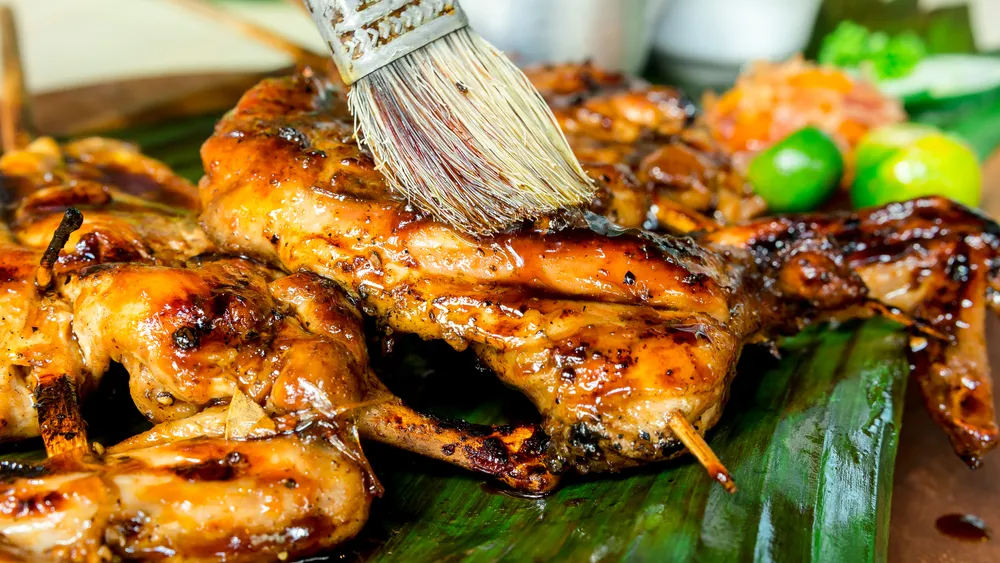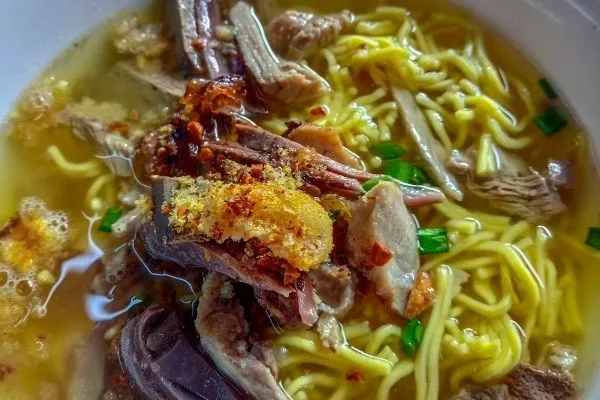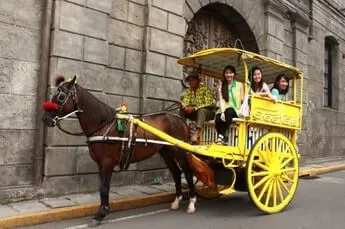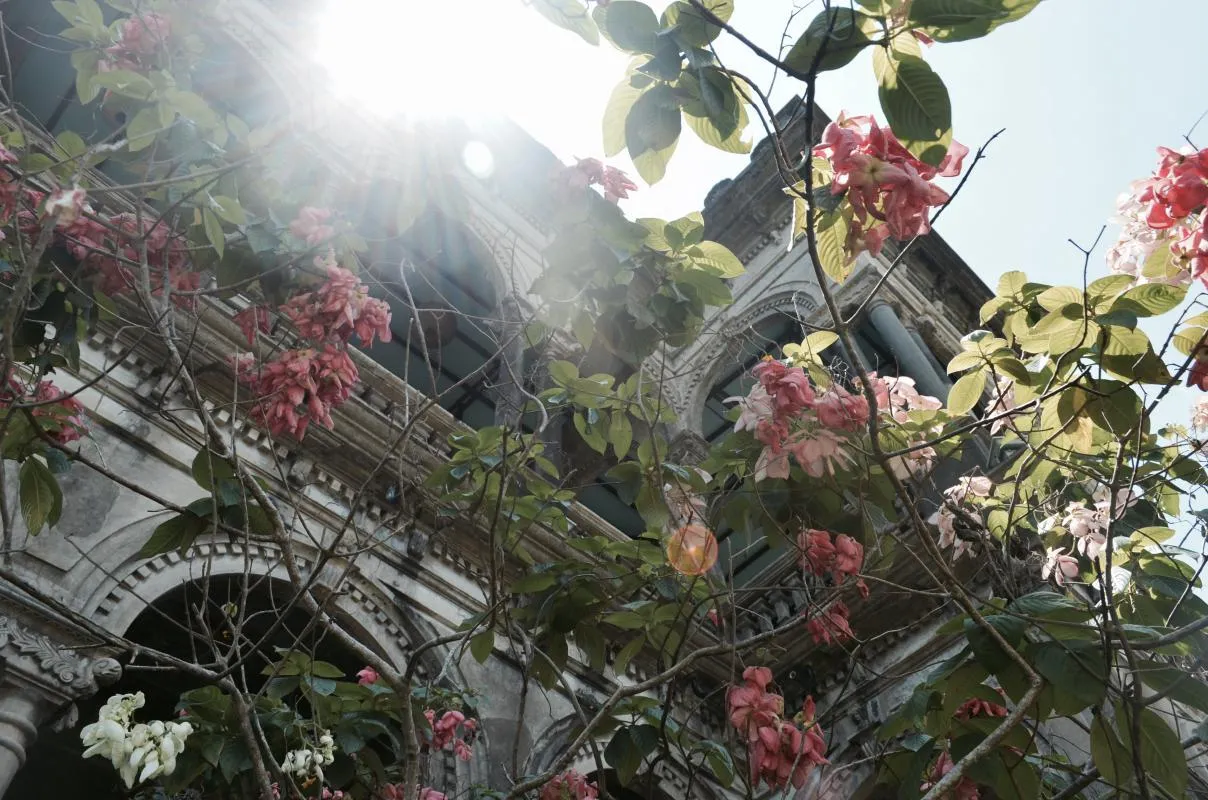Beyond its reputation as the “City of Smiles,” Bacolod is also rich in history and charm. The city is home to landmarks like The Ruins and the San Sebastian Cathedral. It’s the heart of Negros Occidental’s sugar industry as well, with deep roots in sugarcane production that continue to shape its economy and culture.
But if there's one more thing that sets this city apart, it’s the incredibly diverse food culture, which ranges from traditional Western Visayas dishes to modern culinary innovations. To truly experience the essence of Bacolod, sampling its authentic dishes and desserts is a must.
In this blog post, we'll take you through the city’s culinary scene. We'll list the best food in Bacolod to get a taste of its vibrant culture and flavors.
7 Best Local Dishes to Try in Bacolod
From savory to sweet, Bacolod's famous food will leave you craving more. Here are some dishes worth trying out.
1. Chicken Inasal
Bacolod's iconic chicken inasal is a must-try for any traveler. Marinated in local spices like calamansi, lemongrass, and garlic, this grilled chicken dish delivers a uniquely flavorful kick that captures the essence of Bacolod’s culinary heritage.
It's then typically served with garlic rice and dipping sauces, such as vinegar, soy sauce, and chili. You can try a satisfying serving of chicken inasal at Masskara Chicken in B.S. Aquino Drive or Nena's Rose Inasal in Hernaez Street.
2. Kansi
Kansi is Bacolod's answer to comfort food. Imagine the tangy flavors of sinigang combined with the savory richness of bulalo. What sets this dish apart is the use of the native batwan fruit, which gives the soup its distinctive sour taste. If you want the best, head to Sharyn's Cansi House, where this hearty dish will warm your soul.
3. K.B.L.
K.B.L. stands for kadyos (Congo peas), baboy (pork), and langka (jackfruit)—a trio of ingredients that make up this beloved Bacolod dish. Together, they create a flavorful, hearty soup that locals enjoy on rainy days.
For the best K.B.L., visit Sandok Comfort Food on Narra Avenue or Chicken House on Lacson Street.
4. Napoleones
After indulging in some of Bacolod's best food, you can cap your meal with napoleones: a sweet, flaky pastry filled with creamy custard and topped with glazed sugar. Its delicate layers create a pleasant crunch with each bite.
Locals rave about Leones Napoleones and Pendy's for the best napoleones in town. If you're in a rush, don't worry—you can grab a box of napoleones from Merzci at the airport. The dessert is an excellent pasalubong (souvenir) to bring home and pairs wonderfully with a hot cup of coffee.
Source: Merczi
5. Half-moon cake
Bacolod's take on Brazo de Mercedes is a half-moon cake—a soft, spongey dessert topped with creamy custard.
If you're looking for variation, some places also fill it with ube (purple yam) or monggo (mung bean) for a more diverse selection. Its light and fluffy interior makes it a great afternoon snack to pair with your favorite kapeng barako or tea.
You can grab some to go from Pendy's on Lacson Street to enjoy this Bacolod favorite and grab some as pasalubong before your trip ends.
6. Barquillos
Barquillos are thin, rolled wafers perfect for nibbling or, as many Filipinos enjoy it, with ice cream. They come in various flavors like ube, pandan (screwpine), and strawberry. You can find the best barquillos at Quan Delicacies or popular stores like BongBong's and Merczi. Grab a pack or two to snack on during your journey home!
7. Piaya
Piaya is a delicious, flat pastry filled with sweet, syrupy fillings like muscovado sugar and sometimes flavored with ube or mango. It's a beloved treat from the Visayas, perfect for satisfying your sweet tooth.
You can find the best piaya at well-known shops like BongBong's or Merzci, where they bake each piece to perfection.
How to Get Around Bacolod?
You may wonder: how exactly will I be able to try all those famous foods in Bacolod? Here are some practical tips to find your way.
Stay at Go Hotels Bacolod for convenient travel
If you're traveling within a budget, Go Hotels Bacolod is the best place to stay in the city. This hotel is just a short ride from Bacolod's top food spots and tourist attractions, including Lacson Street, The Ruins, and San Sebastian Cathedral.
Whether you're a backpacker or a traveling worker, you'll appreciate the convenience and comfort this hotel offers at affordable rates. Plus, staying here means you can easily hop between destinations without wasting time.
Use Grab services, local jeepneys, and tricycles
Getting around Bacolod is easy with a variety of transportation options. For quick and hassle-free rides, consider using Grab services, which are widely available in the city and ideal for visitors who value convenience.
Alternatively, you can opt for local jeepneys and tricycles, which are some of the quickest and most affordable ways to explore Bacolod. Jeepneys follow fixed routes across the city, with common ones passing by Lacson Street, where you'll find many food hubs. For short trips to nearby destinations, you can easily catch a tricycle. Just ask your driver for directions, and you'll be on your way.
Ask locals
Who better to guide you through Bacolod's food culture than the locals? Bacolodnons are hospitable, so they're happy to share their favorite food spots or the best ways to get around. You can chat with someone at a cafe or while riding a jeepney to discover hidden gems that aren't in the travel guidebooks.
Savor the Flavors of Bacolod
Bacolod's vibrant food scene offers a delightful journey for every traveler, from its famous chicken inasal to the sweet, flaky goodness of napoleones. As you explore the city, you'll discover not just the taste but also the culture behind these iconic dishes.
To make the most of your culinary adventure, stay at Go Hotels Bacolod, an affordable hotel in Bacolod City. With its prime location, you can easily access the area's top food destinations. Check out our promos and packages and get the best hotel rates in the city!
Contact us today for more information.
But if there's one more thing that sets this city apart, it’s the incredibly diverse food culture, which ranges from traditional Western Visayas dishes to modern culinary innovations. To truly experience the essence of Bacolod, sampling its authentic dishes and desserts is a must.
In this blog post, we'll take you through the city’s culinary scene. We'll list the best food in Bacolod to get a taste of its vibrant culture and flavors.
7 Best Local Dishes to Try in Bacolod
From savory to sweet, Bacolod's famous food will leave you craving more. Here are some dishes worth trying out.
1. Chicken Inasal
Bacolod's iconic chicken inasal is a must-try for any traveler. Marinated in local spices like calamansi, lemongrass, and garlic, this grilled chicken dish delivers a uniquely flavorful kick that captures the essence of Bacolod’s culinary heritage.
It's then typically served with garlic rice and dipping sauces, such as vinegar, soy sauce, and chili. You can try a satisfying serving of chicken inasal at Masskara Chicken in B.S. Aquino Drive or Nena's Rose Inasal in Hernaez Street.
2. Kansi
Kansi is Bacolod's answer to comfort food. Imagine the tangy flavors of sinigang combined with the savory richness of bulalo. What sets this dish apart is the use of the native batwan fruit, which gives the soup its distinctive sour taste. If you want the best, head to Sharyn's Cansi House, where this hearty dish will warm your soul.
3. K.B.L.
K.B.L. stands for kadyos (Congo peas), baboy (pork), and langka (jackfruit)—a trio of ingredients that make up this beloved Bacolod dish. Together, they create a flavorful, hearty soup that locals enjoy on rainy days.
For the best K.B.L., visit Sandok Comfort Food on Narra Avenue or Chicken House on Lacson Street.
4. Napoleones
After indulging in some of Bacolod's best food, you can cap your meal with napoleones: a sweet, flaky pastry filled with creamy custard and topped with glazed sugar. Its delicate layers create a pleasant crunch with each bite.
Locals rave about Leones Napoleones and Pendy's for the best napoleones in town. If you're in a rush, don't worry—you can grab a box of napoleones from Merzci at the airport. The dessert is an excellent pasalubong (souvenir) to bring home and pairs wonderfully with a hot cup of coffee.
Source: Merczi
5. Half-moon cake
Bacolod's take on Brazo de Mercedes is a half-moon cake—a soft, spongey dessert topped with creamy custard.
If you're looking for variation, some places also fill it with ube (purple yam) or monggo (mung bean) for a more diverse selection. Its light and fluffy interior makes it a great afternoon snack to pair with your favorite kapeng barako or tea.
You can grab some to go from Pendy's on Lacson Street to enjoy this Bacolod favorite and grab some as pasalubong before your trip ends.
6. Barquillos
Barquillos are thin, rolled wafers perfect for nibbling or, as many Filipinos enjoy it, with ice cream. They come in various flavors like ube, pandan (screwpine), and strawberry. You can find the best barquillos at Quan Delicacies or popular stores like BongBong's and Merczi. Grab a pack or two to snack on during your journey home!
7. Piaya
Piaya is a delicious, flat pastry filled with sweet, syrupy fillings like muscovado sugar and sometimes flavored with ube or mango. It's a beloved treat from the Visayas, perfect for satisfying your sweet tooth.
You can find the best piaya at well-known shops like BongBong's or Merzci, where they bake each piece to perfection.
How to Get Around Bacolod?
You may wonder: how exactly will I be able to try all those famous foods in Bacolod? Here are some practical tips to find your way.
Stay at Go Hotels Bacolod for convenient travel
If you're traveling within a budget, Go Hotels Bacolod is the best place to stay in the city. This hotel is just a short ride from Bacolod's top food spots and tourist attractions, including Lacson Street, The Ruins, and San Sebastian Cathedral.
Whether you're a backpacker or a traveling worker, you'll appreciate the convenience and comfort this hotel offers at affordable rates. Plus, staying here means you can easily hop between destinations without wasting time.
Use Grab services, local jeepneys, and tricycles
Getting around Bacolod is easy with a variety of transportation options. For quick and hassle-free rides, consider using Grab services, which are widely available in the city and ideal for visitors who value convenience.
Alternatively, you can opt for local jeepneys and tricycles, which are some of the quickest and most affordable ways to explore Bacolod. Jeepneys follow fixed routes across the city, with common ones passing by Lacson Street, where you'll find many food hubs. For short trips to nearby destinations, you can easily catch a tricycle. Just ask your driver for directions, and you'll be on your way.
Ask locals
Who better to guide you through Bacolod's food culture than the locals? Bacolodnons are hospitable, so they're happy to share their favorite food spots or the best ways to get around. You can chat with someone at a cafe or while riding a jeepney to discover hidden gems that aren't in the travel guidebooks.
Savor the Flavors of Bacolod
Bacolod's vibrant food scene offers a delightful journey for every traveler, from its famous chicken inasal to the sweet, flaky goodness of napoleones. As you explore the city, you'll discover not just the taste but also the culture behind these iconic dishes.
To make the most of your culinary adventure, stay at Go Hotels Bacolod, an affordable hotel in Bacolod City. With its prime location, you can easily access the area's top food destinations. Check out our promos and packages and get the best hotel rates in the city!
Contact us today for more information.
Known for its vibrant culture, chicken inasal, and, of course, the famous MassKara Festival, Bacolod is a destination that doesn’t cost an arm and a leg. Be it business, adventure, or a quick getaway, the province has something for everyone—and fortunately, that includes a wide range of budget-friendly places to stay.
As a first-time visitor, you might be wondering where to stay in Bacolod and how to get the most bang for your buck. Don’t worry—you don’t have to splurge to enjoy your stay.
Bacolod’s accommodations have many affordable options that are both comfy and wallet-friendly. Whether you’re a solo traveler or vacationing with a family and still want to enjoy modern amenities while saving money, this guide is here for you.
Read on for tips on how to find the best hotel in Bacolod that suits your budget.
4 Tips for Finding a Budget-Friendly Hotel in Bacolod
If you want to explore Bacolod without burning a hole in your pocket, you must focus on one of the most crucial parts of any trip—finding a place to stay. You want somewhere that’s affordable, cozy, and as close to the action as possible.
Here are some tips on finding a budget hotel in Bacolod:
1. Book accommodations early for better deals
If you’re planning a trip to Bacolod, especially during peak seasons like the MassKara Festival, booking your lodging well in advance can save you a lot of money. Hotels tend to raise prices as availability decreases, so locking in your stay a few months early means lower rates and better choices.
Platforms like Agoda and Booking.com are your best friends for finding early-bird discounts. These websites often offer exclusive deals for travelers who book ahead of time, giving you access to affordable hotels in Bacolod City without stretching your budget.
2. Choose hotels near Bacolod’s main attractions for convenience
When you’re traveling on a budget, being in a central location is critical. Staying near Bacolod’s main attractions, such as The Ruins, the Bacolod Public Plaza, and Lacson Street, not only saves you money on transportation but also maximizes your time exploring the city.
Opting for accessible accommodations means you can walk to popular spots, enjoy local food, and get the whole Bacolod experience without shelling out for taxis or ride-sharing services.
In particular, Go Hotels Bacolod is an excellent lodging in the City of Smiles. Not only does it offer clean rooms with essential amenities like free Wi-Fi, but it’s also conveniently located right along the iconic Lacson Street and beside one of Bacolod’s most famous malls. Its strategic location ensures you’re just a stone’s throw away from major landmarks and attractions, making it an ideal choice for your stay.
3. Look for hotels offering complimentary breakfast or other perks
When you’re trying to stick to a budget, little things like free breakfast can go a long way. Check if the hotels and hostels you’re browsing offer complimentary breakfasts, which means you’re starting your day with a full meal at no extra cost.
Accommodation that gives these perks saves you from having to spend on an additional meal. Then, you can allot your budget to other experiences like exploring local food markets or attractions.
Beyond breakfast, some budget hotels provide perks like free Wi-Fi, complimentary shuttle services, or discounted tour activities. These extras may seem small, but they enhance your overall experience and help you get the most out of your stay without adding to your expenses.
4. Use loyalty programs or credit card points for saving
If you travel frequently or have a credit card with a rewards program, you might already have access to points or freebies that can help lower your accommodation costs.
Some hotel chains in Bacolod, as well as booking platforms, offer loyalty programs where frequent guests can earn points and trade them for discounts or complimentary stays. For example, Go Rewards members can enjoy exclusive perks and savings on their bookings. Take advantage of these programs if you’re a member.
Additionally, some credit cards offer cashback or points for travel-related purchases, including hotel bookings. Ask your credit card provider to see if you’re eligible for any offers or if they partner with any travel platforms for further discounts.
FAQs About Finding Accommodations in Bacolod
1. How much should I budget for accommodation in Bacolod?
When staying in Bacolod on a budget, be ready to spend anywhere between PHP 800 and PHP 2,500 per night. Of course, the rate you’ll get depends on the hotel’s location, facilities, and the time of year.
Budget hotels, like Go Hotels Bacolod, often offer standard rooms starting at PHP 1,200 per night. For that price, you can already have air conditioning, free Wi-Fi, and a comfortable bed—just about the place you need to rest after a long day of exploring.
2. When is the best time to book a budget hotel in Bacolod?
The best time to book a budget hotel in Bacolod is during the off-peak season, which falls on January, February, and March as well as July, August, and September.
During these months, you’ll find lower rates and more availability since fewer tourists are visiting the city. You can take advantage of these quieter times to get better deals on accommodation that match your travel budget.
If you’re planning to visit during a high-demand period like the annual MassKara Festival in October, it’s a good idea to book your hotel at least three to six months in advance. The festival draws large crowds, and hotel prices tend to spike as the event approaches.
3. Are budget hotels safe and comfortable for solo travelers?
Yes, many budget hotels in Bacolod tick these boxes. Establishments like Go Hotels Bacolod offer amenities tailored for solo visitors, such as 24/7 security and in-room safes, to give you peace of mind during your stay.
It’s also a good idea to look for budget hotels that have responsive front desk services and positive reviews from past solo travelers. By reading reviews on platforms like Agoda or TripAdvisor, you can get a sense of how well a hotel takes care of its guests and how secure the environment is.
Home Away from Home
Finding budget-friendly accommodation in Bacolod doesn’t mean sacrificing comfort, convenience, or memorable experiences.
You can relax with plenty of affordable options, like Go Hotels Bacolod, offering a cozy stay without breaking the bank. Whether your bucket list is to soak in the city’s rich culture, enjoy local attractions, or indulge in the area’s famous culinary scene, there’s a perfect hotel that fits your budget. With Go Hotels Bacolod, you can have the ideal balance of quality and affordability.
Ready to book your stay? Check out our latest promos and packages, or contact us for information. Don’t miss out on the best rates for your Bacolod trip!
As a first-time visitor, you might be wondering where to stay in Bacolod and how to get the most bang for your buck. Don’t worry—you don’t have to splurge to enjoy your stay.
Bacolod’s accommodations have many affordable options that are both comfy and wallet-friendly. Whether you’re a solo traveler or vacationing with a family and still want to enjoy modern amenities while saving money, this guide is here for you.
Read on for tips on how to find the best hotel in Bacolod that suits your budget.
4 Tips for Finding a Budget-Friendly Hotel in Bacolod
If you want to explore Bacolod without burning a hole in your pocket, you must focus on one of the most crucial parts of any trip—finding a place to stay. You want somewhere that’s affordable, cozy, and as close to the action as possible.
Here are some tips on finding a budget hotel in Bacolod:
1. Book accommodations early for better deals
If you’re planning a trip to Bacolod, especially during peak seasons like the MassKara Festival, booking your lodging well in advance can save you a lot of money. Hotels tend to raise prices as availability decreases, so locking in your stay a few months early means lower rates and better choices.
Platforms like Agoda and Booking.com are your best friends for finding early-bird discounts. These websites often offer exclusive deals for travelers who book ahead of time, giving you access to affordable hotels in Bacolod City without stretching your budget.
2. Choose hotels near Bacolod’s main attractions for convenience
When you’re traveling on a budget, being in a central location is critical. Staying near Bacolod’s main attractions, such as The Ruins, the Bacolod Public Plaza, and Lacson Street, not only saves you money on transportation but also maximizes your time exploring the city.
Opting for accessible accommodations means you can walk to popular spots, enjoy local food, and get the whole Bacolod experience without shelling out for taxis or ride-sharing services.
In particular, Go Hotels Bacolod is an excellent lodging in the City of Smiles. Not only does it offer clean rooms with essential amenities like free Wi-Fi, but it’s also conveniently located right along the iconic Lacson Street and beside one of Bacolod’s most famous malls. Its strategic location ensures you’re just a stone’s throw away from major landmarks and attractions, making it an ideal choice for your stay.
3. Look for hotels offering complimentary breakfast or other perks
When you’re trying to stick to a budget, little things like free breakfast can go a long way. Check if the hotels and hostels you’re browsing offer complimentary breakfasts, which means you’re starting your day with a full meal at no extra cost.
Accommodation that gives these perks saves you from having to spend on an additional meal. Then, you can allot your budget to other experiences like exploring local food markets or attractions.
Beyond breakfast, some budget hotels provide perks like free Wi-Fi, complimentary shuttle services, or discounted tour activities. These extras may seem small, but they enhance your overall experience and help you get the most out of your stay without adding to your expenses.
4. Use loyalty programs or credit card points for saving
If you travel frequently or have a credit card with a rewards program, you might already have access to points or freebies that can help lower your accommodation costs.
Some hotel chains in Bacolod, as well as booking platforms, offer loyalty programs where frequent guests can earn points and trade them for discounts or complimentary stays. For example, Go Rewards members can enjoy exclusive perks and savings on their bookings. Take advantage of these programs if you’re a member.
Additionally, some credit cards offer cashback or points for travel-related purchases, including hotel bookings. Ask your credit card provider to see if you’re eligible for any offers or if they partner with any travel platforms for further discounts.
FAQs About Finding Accommodations in Bacolod
1. How much should I budget for accommodation in Bacolod?
When staying in Bacolod on a budget, be ready to spend anywhere between PHP 800 and PHP 2,500 per night. Of course, the rate you’ll get depends on the hotel’s location, facilities, and the time of year.
Budget hotels, like Go Hotels Bacolod, often offer standard rooms starting at PHP 1,200 per night. For that price, you can already have air conditioning, free Wi-Fi, and a comfortable bed—just about the place you need to rest after a long day of exploring.
2. When is the best time to book a budget hotel in Bacolod?
The best time to book a budget hotel in Bacolod is during the off-peak season, which falls on January, February, and March as well as July, August, and September.
During these months, you’ll find lower rates and more availability since fewer tourists are visiting the city. You can take advantage of these quieter times to get better deals on accommodation that match your travel budget.
If you’re planning to visit during a high-demand period like the annual MassKara Festival in October, it’s a good idea to book your hotel at least three to six months in advance. The festival draws large crowds, and hotel prices tend to spike as the event approaches.
3. Are budget hotels safe and comfortable for solo travelers?
Yes, many budget hotels in Bacolod tick these boxes. Establishments like Go Hotels Bacolod offer amenities tailored for solo visitors, such as 24/7 security and in-room safes, to give you peace of mind during your stay.
It’s also a good idea to look for budget hotels that have responsive front desk services and positive reviews from past solo travelers. By reading reviews on platforms like Agoda or TripAdvisor, you can get a sense of how well a hotel takes care of its guests and how secure the environment is.
Home Away from Home
Finding budget-friendly accommodation in Bacolod doesn’t mean sacrificing comfort, convenience, or memorable experiences.
You can relax with plenty of affordable options, like Go Hotels Bacolod, offering a cozy stay without breaking the bank. Whether your bucket list is to soak in the city’s rich culture, enjoy local attractions, or indulge in the area’s famous culinary scene, there’s a perfect hotel that fits your budget. With Go Hotels Bacolod, you can have the ideal balance of quality and affordability.
Ready to book your stay? Check out our latest promos and packages, or contact us for information. Don’t miss out on the best rates for your Bacolod trip!
Everybody seems to be flying off to the cities, mountains, and islands of Luzon, Visayas, and Mindanao. Hence, it’s unsurprising that in 2024, domestic visitor spending in the Philippines is expected to hit a record ₱3.7 trillion, surpassing 2019 levels by 1.8%.
However, what’s preventing most from packing their bags is the rise in airfare costs. Finding an affordable flight—even domestically—can feel financially overwhelming, whether you're a traveling salesman, backpacker, or staycationer.
In this blog, we’ll offer practical tips, hacks, and resources to help you book cheap domestic flights in the Philippines. Follow these strategies to keep your adventures budget-friendly and beat the rising prices, even during peak seasons!
How to Find the Cheapest Domestic Flights
A classic tactic in finding cheap domestic flights is booking early. But there’s a lot more than that; it also helps to know where and how to look for the best deals. Here are some tried-and-tested methods that can help you snag the cheapest domestic airlines and save on airfare within the Philippines.
1. Utilize flight comparison websites and apps
If you’re new to traveling solo or booking flights on your own, platforms like Google Flights and Traveloka are great tools for comparing airfare across multiple airlines in just a few clicks. These websites provide a broad range of options and display different dates and times when fares may be cheaper.
You can also set fare alerts. Many websites and apps offer this feature to notify you of price drops on your selected routes, helping you book domestic flights at the optimal time when prices are low.
2. Check budget airlines for promotions and seat sales
Airlines often offer promotions, but not all are easy to catch. Checking budget airlines for deals can lead to major savings on your domestic trips. Budget airlines like Cebu Pacific, AirAsia, and PAL Express regularly offer seat sales and promotional fares in the Philippines.
For instance, Cebu Pacific’s famous "Piso Fare" promotions allow passengers to book flights for as low as ₱1 (excluding taxes and fees), making it an excellent choice for budget-conscious travelers. To beat other travelers, subscribe to airline newsletters or follow them on social media. This way, you'll be one of the first to know about upcoming sales and deals.
3. Explore airline loyalty programs and credit card rewards
You can accumulate points through airline loyalty programs and redeem them for discounted or even free flights. Frequent travelers should look into programs such as Mabuhay Miles or GetRewards, which offer great benefits for their members.
Additionally, credit cards with travel rewards can offer significant savings. For instance, some travelers can use GetRewards points to score free round-trip tickets to Cebu after booking just a couple of promo flights. To get the most savings out of these programs, make sure to utilize them.
4. Be flexible with airports
Sometimes, the best deals aren't always from your closest airport. When booking, check flights departing from or arriving at other nearby airports. For example, if you’re from Manila and flying out, you may find better deals from Clark International Airport, depending on the season or airline.
By comparing routes between airports, you can take advantage of lower fares, even if it means a short trip to another terminal.
5. Consider alternative routes and stopovers
While direct flights may be more convenient, opting for connecting flights or even multi-leg trips can often yield lower fares. For instance, if you're heading to Boracay, consider flying into Kalibo instead of the closer Caticlan airport. Flights to Kalibo are typically cheaper, and from there, you can take a bus or van to Caticlan Jetty Port, followed by a ferry to Boracay.
This flexibility can open up more budget-friendly options, especially if you're not in a rush and are willing to explore new travel routes.
Booking Tips for Finding the Cheapest Domestic Flights
Beyond finding flight deals, how and when you book can greatly impact the total cost of your trip. Check out these booking tips to help you lock in the best rates for your domestic flights.
Book early, but stay flexible with dates
The right timing is essential when it comes to finding affordable flights. Ideally, you should book your flights two to three months in advance. However, flexibility with your travel dates can help you uncover cheaper options. Using fare calendars, you can see which days have lower prices—flights on Tuesdays or Wednesdays are often more affordable, as noted by NerdWallet.
You can avoid high costs and still plan an affordable getaway by remaining flexible.
Avoid peak seasons and holidays
Peak seasons like Christmas, Holy Week, and school vacations see a sharp rise in airfare prices. To avoid this, it's best to plan your trips during off-peak times when demand is lower. Traveling during the shoulder season (e.g., February to May) allows you to explore popular destinations at lower costs and with fewer crowds.
Planning your trips around these less busy periods can significantly reduce your travel expenses while giving you a more relaxed experience.
Take advantage of last-minute deals
While booking early is often recommended, there are times when airlines offer last-minute deals to fill up remaining seats. If you have flexible travel plans or are looking for a spontaneous trip, checking for last-minute promotions can be a great way to save. Apps like Skyscanner and Hopper sometimes list last-minute discounts, allowing you to book flights at reduced rates.
Keep an eye on social media channels or subscribe to newsletters to receive notifications about these offers, especially during off-peak periods.
Avoid extra baggage fees
When booking cheap flights, it's easy to forget that additional fees, like checked baggage, can quickly increase your overall travel costs. Pack light and stick to the airline’s free carry-on baggage limit to avoid these charges. You can also look into airlines that offer special promotions on baggage fees, ensuring that you don’t get surprised with extra costs when flying with cheap domestic airlines.
By planning and packing efficiently, you’ll save on excess baggage fees and keep your flight expenses low.
Affordable Adventures Await
Finding the cheapest domestic flights in the Philippines doesn’t have to be a daunting task. By using flight comparison tools, subscribing to promo notifications, and being flexible with your travel dates, you can significantly cut down on airfare costs. Pair these tips with budget-friendly accommodations like Go Hotels, and you’ll be set for a low-cost, stress-free trip.
Go Hotels makes travel even more convenient with its Go 24/7 and Go 365 options. Go 24/7 lets you enjoy flexible check-in and check-out times, while Go 365 offers year-round deals that guarantee value for your money. With these features and locations nationwide, Go Hotels is your perfect travel partner for affordable and hassle-free adventures. Ready to book your next adventure? Check out Go Hotels' promos and packages and start planning your trip today! For more information, you can visit the Go Hotels contact page.
With its cobblestone streets, colonial-era architecture, and bustling atmosphere, Malate is a district that exudes a certain charm that's hard to resist. From Manila City churches to the Manila Zoo, there’s no shortage of places to visit.
But, what truly sets the district apart is its food scene—a melting pot of flavors and culinary traditions that attracts foodies from all over. From sizzling street eats to upscale dining, there's something here to satisfy every craving and budget. Quite the reputation when Malate’s name comes from maalat, meaning salty!
So, if you’re on the lookout for the best restaurants and cafés around the area, this article can help. Here’s where to eat in Malate!
Must-Try Restaurants and Cafés in Malate
From sweet to savory, solo travelers can eat their fills in Malate without breaking the bank. Here are must-try places on your list for your Malate food trip:
Café Adriatico
1790 M. Adriatico St., Remedios Circle, Malate, Manila
Open from 7:00 AM–12:00 AM.
Nestled in the heart of Remedios Circle, this cozy cafe is not just a place to dine but a trip back in time. It’s the first restaurant established by LJC Group founder Larry J. Cruz in 1979. With its vintage decor and warm ambiance, the Parisian-inspired establishment is the perfect spot for both solo travelers and groups looking to unwind.
If you’re craving Filipino and Spanish dishes, this is the place to be. Their specialties include Lola Ising’s Adobo Rice, Chicken Ala Kiev, and their famous Chocolate Eh. The latter is a must-try pairing for your meal to complete the Café Adriatico experience.
Their dishes range from around ₱300-1,000, with the most expensive being their Black Angus Rib Eye steak. For a full meal with an appetizer, main course, and dessert, expect to spend around ₱700-800. They also have a breakfast menu with meals available from 7:00–11:00 AM.
Purple Yam
603 Julio Nakpil St. Corner Jorge Bocobo, Malate, Manila, Philippines
As their Instagram bio says, Purple Yam makes really good pies. From chocolate esaimadas and buko ube pie to butterscotch cashew brownies, you can be sure to satisfy your sweet tooth.
While they used to offer restaurant dining, they still do pickup and delivery of their pastries from Tuesdays to Sundays. You can simply place orders online and send inquiries through their social media pages.
Speaking of best-sellers, a mini pie to snack on goes for around ₱250. If you want a box of pastries, a dozen chocolate esaimadas go for ₱1,680, while 15 buko rolls are ₱1,155.
The Library Café by Gourmet Farms
Ramon Magsaysay Center, Quintos St. Malate, Malate, Philippines
Open from 8:00 AM–8:00 PM
Do you love coffee? How about reading? You can have both in the Library Café on the ground floor of the Ramon Magsaysay Center.
Housed in the Ramon Magsaysay Laureate Library and Museum, the ambiance is quiet and relaxed. There’s a communal long table to hang out with your friends, but if you prefer your solitude, there are also plenty of armchairs.
Their specialty is, of course, coffee. From frappes, pourovers, and other staples such as espresso and cappuccino, you can expect to spend about ₱115-250 to get your caffeine fix.
For non-coffee drinkers, they also serve tea, hot chocolate, and fruit shakes. Pro tip: Check in during holidays for special drinks, such as their Choco Mallows Latte for Christmas.
Budget-Friendly Dining Options in Malate
Say you’re in Manila for only 24 hours, went to book a budget hotel, and want places to eat that are also budget-friendly. Here are some of the best places to dine that won’t dent your wallet.
Erra’s Vest Ramen Bar & Grill
1695 Maria Orosa St. (Corner Malvar St.), Malate Manila, Manila, Philippines
Open 24 hours
Having ramen for 24 hours sounds too good to be true, but such a place exists—it’s Erra’s Vest Ramen Bar & Grill. At night, it stands out with its red sign and red lights, looking like a small joint you can find in Japan.
Aside from the ramen and beers, you can also eat traditional Filipino pulutan like chicken skin and tokwa’t baboy. Another dish that diners recommend is their buttered chicken. Meals are very affordable at around ₱60 for their silogs to ₱450 for crispy pata.
Silya Restobar
635 Julio Nakpil St, Malate, Manila, Metro Manila
Open from 4:00 PM–5:00 AM
This budget-friendly eatery offers an array of classic Filipino dishes for those who want to drink, eat, and be merry. It’s open daily until the wee hours of the morning, which is excellent for late-night cravings.
With plenty of outdoor seating, you can have a beer bucket and pulutan for ₱560 or split the ₱700 crispy pata. If you’re hungry, their menu offers different dishes, from sandwiches to omelets to sizzling meals. You can spend as low as ₱100 for a sandwich, but a filling meal can cost you around ₱250-350. Quite a bargain!
Wok Inn
465 Remedios St, Malate, Manila, 1000 Metro Manila
Open from 10:30 AM–11:00 PM
Craving Chinese cuisine on a budget? Wok Inn has your back! The restaurant looks distinct with its red doors, checkered floor, and three signs, so it’s hard to miss.
Source: Tripadvisor
One of the restaurant’s specialties is frog legs, prepared in different ways like fried, adobo, and chili, which are priced at ₱450. You can also get noodles for ₱160 and chicken dishes for ₱295-375. Talk about satisfying cravings!
A Palette of Flavors for Your Palate at Malate
From cozy cafes to budget-friendly eateries and upscale dining spots, Malate has something for every palate. With our list of options, you can now enjoy different dishes that fit your budget.
While in the area, why not save yourself the hassle of commuting and staying somewhere comfortable? Go Hotels in Manila offers cozy accommodations at affordable prices, so you have a place to sleep off the food coma after your culinary adventure.
Check out our promos and packages and book now to get yourself the best rate possible. Contact us today for more information.
But, what truly sets the district apart is its food scene—a melting pot of flavors and culinary traditions that attracts foodies from all over. From sizzling street eats to upscale dining, there's something here to satisfy every craving and budget. Quite the reputation when Malate’s name comes from maalat, meaning salty!
So, if you’re on the lookout for the best restaurants and cafés around the area, this article can help. Here’s where to eat in Malate!
Must-Try Restaurants and Cafés in Malate
From sweet to savory, solo travelers can eat their fills in Malate without breaking the bank. Here are must-try places on your list for your Malate food trip:
Café Adriatico
1790 M. Adriatico St., Remedios Circle, Malate, Manila
Open from 7:00 AM–12:00 AM.
Nestled in the heart of Remedios Circle, this cozy cafe is not just a place to dine but a trip back in time. It’s the first restaurant established by LJC Group founder Larry J. Cruz in 1979. With its vintage decor and warm ambiance, the Parisian-inspired establishment is the perfect spot for both solo travelers and groups looking to unwind.
If you’re craving Filipino and Spanish dishes, this is the place to be. Their specialties include Lola Ising’s Adobo Rice, Chicken Ala Kiev, and their famous Chocolate Eh. The latter is a must-try pairing for your meal to complete the Café Adriatico experience.
Their dishes range from around ₱300-1,000, with the most expensive being their Black Angus Rib Eye steak. For a full meal with an appetizer, main course, and dessert, expect to spend around ₱700-800. They also have a breakfast menu with meals available from 7:00–11:00 AM.
Purple Yam
603 Julio Nakpil St. Corner Jorge Bocobo, Malate, Manila, Philippines
As their Instagram bio says, Purple Yam makes really good pies. From chocolate esaimadas and buko ube pie to butterscotch cashew brownies, you can be sure to satisfy your sweet tooth.
While they used to offer restaurant dining, they still do pickup and delivery of their pastries from Tuesdays to Sundays. You can simply place orders online and send inquiries through their social media pages.
Speaking of best-sellers, a mini pie to snack on goes for around ₱250. If you want a box of pastries, a dozen chocolate esaimadas go for ₱1,680, while 15 buko rolls are ₱1,155.
The Library Café by Gourmet Farms
Ramon Magsaysay Center, Quintos St. Malate, Malate, Philippines
Open from 8:00 AM–8:00 PM
Do you love coffee? How about reading? You can have both in the Library Café on the ground floor of the Ramon Magsaysay Center.
Housed in the Ramon Magsaysay Laureate Library and Museum, the ambiance is quiet and relaxed. There’s a communal long table to hang out with your friends, but if you prefer your solitude, there are also plenty of armchairs.
Their specialty is, of course, coffee. From frappes, pourovers, and other staples such as espresso and cappuccino, you can expect to spend about ₱115-250 to get your caffeine fix.
For non-coffee drinkers, they also serve tea, hot chocolate, and fruit shakes. Pro tip: Check in during holidays for special drinks, such as their Choco Mallows Latte for Christmas.
Budget-Friendly Dining Options in Malate
Say you’re in Manila for only 24 hours, went to book a budget hotel, and want places to eat that are also budget-friendly. Here are some of the best places to dine that won’t dent your wallet.
Erra’s Vest Ramen Bar & Grill
1695 Maria Orosa St. (Corner Malvar St.), Malate Manila, Manila, Philippines
Open 24 hours
Having ramen for 24 hours sounds too good to be true, but such a place exists—it’s Erra’s Vest Ramen Bar & Grill. At night, it stands out with its red sign and red lights, looking like a small joint you can find in Japan.
Aside from the ramen and beers, you can also eat traditional Filipino pulutan like chicken skin and tokwa’t baboy. Another dish that diners recommend is their buttered chicken. Meals are very affordable at around ₱60 for their silogs to ₱450 for crispy pata.
Silya Restobar
635 Julio Nakpil St, Malate, Manila, Metro Manila
Open from 4:00 PM–5:00 AM
This budget-friendly eatery offers an array of classic Filipino dishes for those who want to drink, eat, and be merry. It’s open daily until the wee hours of the morning, which is excellent for late-night cravings.
With plenty of outdoor seating, you can have a beer bucket and pulutan for ₱560 or split the ₱700 crispy pata. If you’re hungry, their menu offers different dishes, from sandwiches to omelets to sizzling meals. You can spend as low as ₱100 for a sandwich, but a filling meal can cost you around ₱250-350. Quite a bargain!
Wok Inn
465 Remedios St, Malate, Manila, 1000 Metro Manila
Open from 10:30 AM–11:00 PM
Craving Chinese cuisine on a budget? Wok Inn has your back! The restaurant looks distinct with its red doors, checkered floor, and three signs, so it’s hard to miss.
Source: Tripadvisor
One of the restaurant’s specialties is frog legs, prepared in different ways like fried, adobo, and chili, which are priced at ₱450. You can also get noodles for ₱160 and chicken dishes for ₱295-375. Talk about satisfying cravings!
A Palette of Flavors for Your Palate at Malate
From cozy cafes to budget-friendly eateries and upscale dining spots, Malate has something for every palate. With our list of options, you can now enjoy different dishes that fit your budget.
While in the area, why not save yourself the hassle of commuting and staying somewhere comfortable? Go Hotels in Manila offers cozy accommodations at affordable prices, so you have a place to sleep off the food coma after your culinary adventure.
Check out our promos and packages and book now to get yourself the best rate possible. Contact us today for more information.
Welcome to Dumaguete, the City of Gentle People! Nestled in Negros Oriental, Dumaguete is a charming destination bursting with rich history, vibrant culture, and breathtaking natural beauty. If you’re a budget traveler seeking your next adventure, Dumaguete should be at the top of your list!
Read on as we provide a comprehensive guide to exploring the city on a budget. We have a sample itinerary for a day tour in Dumaguete covering its highlights to tips on transportation, accommodation, and dining. Discover the gems of Dumaguete without breaking the bank!
How to Get to Dumaguete
Getting to Dumaguete is relatively easy. Here are several options depending on where you’re coming from:
By plane: If you’re traveling from other parts of the Philippines or internationally, Sibulan Airport is your gateway. Several airlines offer flights to Dumaguete from major cities like Manila and Cebu. While planes are the fastest option, they can be more expensive, especially if not booked in advance.
By ferry: Dumaguete is a port city, so it’s accessible by ferry from neighboring islands like Cebu and Bohol. Several ferry companies operate routes to and from Dumaguete Port. Ferry trips offer scenic views during the journey and can be more affordable than flying, but travel time can vary.
By bus: If you’re already coming from the Negros region, bus travel is a great economical option. Several bus companies provide services to Dumaguete, offering both ordinary and air-conditioned buses. However, buses are generally slower and take more circuitous routes than ferries or planes.
By car: This is only available if your vehicle is already in Negros or you choose to rent a car once you arrive there. Currently, no ferries allow cars to travel onboard. Having a personal vehicle can greatly extend your exploration range, offering flexibility and convenience for travelers who prefer exploring at their own pace.
General tips to save money on transportation
Book tickets in advance, especially during peak travel seasons
Opt for off-peak hours to get cheaper fares
Look out for promo codes or discounts offered by transportation companies
Use online booking platforms for better deals and convenience
Pack light to avoid paying extra fees
Where to Stay in Dumaguete
When it comes to finding accommodation on your day trip to Dumaguete that won’t break the bank, you’ll be pleased to discover a variety of budget-friendly options ranging from cozy hostels to charming guesthouses. However, one standout choice for budget travelers is Go Hotels Dumaguete.
This budget hotel in Dumaguete offers stylish and spacious rooms with all the essentials for a comfortable stay without the hefty price tag. Situated in a convenient location, it provides easy access to Dumaguete’s many attractions, dining spots, and transportation hubs, including the biggest mall in Dumaguete, near the bus terminal, making it a quiet refuge after a long day of adventure.
What’s more, Go Hotels Dumaguete prides itself on offering affordable rates without compromising quality, ensuring you get the most value out of your stay. With excellent service and modern amenities, it’s the perfect choice for budget-conscious travelers exploring Dumaguete.
What to See in Dumaguete: A Day Tour Itinerary
A thrilling day tour through Dumaguete’s top attractions will charm solo travelers and groups alike.
1. Rizal Boulevard
Begin your day with a stroll along Rizal Boulevard, Dumaguete’s iconic waterfront promenade. Lined with palm trees overlooking the sea, this spot is ideal for a scenic walk, taking photos, or relaxing on one of the benches.
Many restaurants and cafes also dot the street, perfect for a morning meal or coffee and a snack. Moreover, you can enjoy its bars and nightclubs if you’re looking for a more exciting way to end your day.
2. Silliman University
Visit the sprawling campus of Silliman University, the first American private university in the Philippines and a center for education and culture in Dumaguete. Observe its historic buildings, lush gardens, and museums. Of note is the Anthropology Museum. Admission fees are minimal but require a prior reservation.
3. Bell Church
Experience a little slice of Chinese culture at the Bell Church. Admire the intricate architecture, colorful pagodas, and serene gardens of this Taoist temple. Don’t forget to ring the bell for good luck, and remember to dress moderately when visiting religious sites.
4. Forest Camp
If you want something more in tune with nature, escape the city to Forest Camp, a serene nature resort in the mountains surrounding Dumaguete. Enjoy swimming in natural pools, ziplining through the forest, or simply relaxing in a hammock amid the tranquil surroundings. Entrance fees are affordable, and you can bring your own food for a budget-friendly picnic.
What to Eat in Dumaguete
Of course, your Dumaguete day tour isn’t complete without sampling the local culinary offerings! Here are some must-try foods for your trip:
1. Budbud Kabog
A local delicacy made from millet or kabog rice, Budbud Kabog is a sweet and sticky rice cake wrapped in banana leaves. You can find it at the public market or enjoy it for breakfast at the popular local café Painitan, where it’s often paired with sikwate (local hot chocolate). This budget-friendly treat offers a taste of traditional Dumaguete fare.
2. Silvanas
Treat yourself to Silvanas, a popular dessert that originated from Dumaguete. These frozen cookie sandwiches are made with buttercream, meringue, and cashew nuts, creating a rich and creamy indulgence. Head to Sans Rival Cakes and Pastries to sample these delectable treats, and consider sharing a box with friends to save on costs.
3. Tempura and Balut
No local food list is complete without a hint of street foods. Visit the stalls along Rizal Boulevard at night to sample tempura and balut—an interesting combination of deep-fried seafood and the Filipino delicacy balut.
Budget-Friendly Dumaguete Delights
Dumaguete is the ideal place to visit on a budget because its many charms are not only affordable but immensely rewarding. The city offers many diverse attractions that won’t break the bank, from its rich history and vibrant culture to its breathtaking natural beauty.
Now is the perfect time to plan your trip to Dumaguete and experience the City of Gentle People for yourself. And when it comes to accommodations, look no further than Go Hotels! We provide the perfect home base for your Dumaguete adventure.
Don’t miss out on exclusive promos and packages. Book your stay at Go Hotels Dumaguete now to secure the best rate! Visit our contact page for more information and start planning your budget-friendly getaway in Dumaguete or any of our other affordable hotels in the Philippines.
Manila isn’t just a city—it’s a living, breathing history book. From enduring centuries of Spanish influence to surviving the ravages of World War II, it’s a place where every corner tells a story. And right at the heart of these tales are the majestic churches that have stood the test of time.
These churches in Manila are a testament to the city’s heritage and cultural significance. If you’re curious to unravel the stories behind these iconic landmarks, let this guide take you on a virtual tour to explore the stunning churches of Manila.
Manila’s 6 Most Famous and Historical Churches You Need to See
Manila is one of the country’s most culturally rich places, as seen through the centuries of history in the city. Take a glimpse into the capital’s past with the list of churches to visit in Manila.
1. Santisimo Rosario Parish
Within Manila’s vibrant University Belt, the Santisimo Rosario Parish stands as a spiritual cornerstone amidst the vibrant energy of the city, located within the esteemed University of Santo Tomas (UST).
Founded in 1611, UST boasts a legacy steeped in tradition, serving as a cradle of academic excellence and heritage. For travelers who want to discover Manila’s diverse landscapes, Santisimo Rosario Parish is a perfect place to start before exploring the surrounding universities.
As you step into the hallowed halls of the university and its adjoining parish, prepare to be greeted by architectural splendor with a profound sense of olden days and tradition. Whether attending a solemn mass or simply marveling at the magnificence of UST’s iconic structures, the Santisimo Rosario Parish offers a serene sanctuary within the hustle and bustle of Manila.
2. Archdiocesan Shrine of Our Lady of Mount Carmel (San Sebastian Church)
The Basilica Menor de San Sebastian could be one of the best churches in Manila for its architectural ingenuity. It stands proudly as the only all-steel church in Asia with a timeless Gothic-inspired design characterized by soaring spires, intricate steelwork, and breathtaking stained glass windows that mesmerize visitors.
Despite facing challenges, the church is a testament to human perseverance and creativity. Together with its story, the San Sebastian Church presents a unique blend of form and function, solidifying its place as a landmark in the heart of Manila.
3. National Shrine of Jesus Nazareno (Quiapo Church)
Officially known as the Minor Basilica of the Black Nazarene, this iconic basilica draws thousands of followers and devotees yearly—especially on its feast day or The Traslacion, where they pay homage to the revered Black Nazarene as it’s paraded around the capital.
Architect Juan Nakpil, a National Artist of the Philippines, crafted the church’s plan in the 1930s following a fire that damaged its predecessor. The result is a majestic structure featuring a spacious dome and two imposing belfries that stand as testaments to the church’s architectural grandeur.
Beyond its religious importance, Quiapo Church exudes a unique folk character, active with devotees and street peddlers outside its walls. Its quaint aura has inspired generations of artists, poets, and filmmakers as it encapsulates the essence of Manila as a busy city with a rich past.
4. National Shrine of Saint Lorenzo Ruiz (Binondo Church)
Originally named Our Lady of the Most Holy Rosary Parish, the Binondo Church is a beautiful church in Binondo, Manila. It holds a special place in the hearts of the Filipino-Chinese community, as masses are conducted in Filipino, English, Hokkien, and Mandarin to reflect the diverse culture of its devotees.
Moreover, Binondo Church attracts not only local parishioners but also food enthusiasts who frequent the nearby restaurants for a Binondo food crawl.
As part of the largest and oldest Chinatown in the world, Binondo offers a culinary adventure like no other, with its array of delectable dishes and culinary delights waiting to be savored. So, make sure to plan your day and enjoy the sights and sounds of Binondo’s streets.
5. The Minor Basilica and Metropolitan Cathedral of the Immaculate Conception (Manila Cathedral)
The Manila Cathedral started as a modest parish built from nipa and bamboo. Today, it’s one of the most historical churches in Manila that has weathered centuries of trials and triumphs, emerging as a symbol of faith in the heart of the walled city of Intramuros.
The cathedral’s story is woven with tales of destruction and reconstruction. Despite facing massive earthquakes and devastation during World War II, it proves to be stronger than its origins. Through centuries, it stands as a paragon of hope and resilience, with each reconstruction serving as a reminder of the indomitable spirit that continues to thrive within its sacred walls.
6. The Archdiocesan Shrine of Our Lady of Consolation and Cincture (San Agustin Church)
San Agustin Church is one of the oldest and most famous churches in Manila. It’s a UNESCO World Heritage Site—standing as a piece of the city’s past within the walls of Intramuros.
Dating back centuries, its Baroque architecture captures the attention of its visitors. Once you step inside, you’re immediately greeted by intricate trompe l’oeil ceilings and a high Baroque altar—each telling a story of devotion and legacy.
The San Agustin Church also holds tales of traditional significance as the final resting place of Manila’s founder, Miguel Lopez de Legazpi, serving as a reminder of the city’s colonial past.
Explore Manila’s Cultural Treasures
The churches in Manila are proof of the city’s enduring grandeur and resilience. All easily take their visitors on a journey through time and faith. From the iconic Manila Cathedral to the steel marvel of San Sebastian Church, each holds a piece of Manila’s vibrant history now embedded in city streets and lingering within the city walls.
Now, it’s your turn to explore! With Go Hotels’ affordable and convenient locations in Manila, you’re just a short ride away from the variety of church attractions and cultural treasures in the vicinity. Go Hotels stands out as one of the nearest, if not the nearest, best value hotel options for your stay, offering comfort and accessibility to enhance your exploration experience.
Don’t miss out on our exclusive promos and packages! Book your room in one of the most affordable hotels in the Philippines and start planning your adventure! Contact us today to learn more.
These churches in Manila are a testament to the city’s heritage and cultural significance. If you’re curious to unravel the stories behind these iconic landmarks, let this guide take you on a virtual tour to explore the stunning churches of Manila.
Manila’s 6 Most Famous and Historical Churches You Need to See
Manila is one of the country’s most culturally rich places, as seen through the centuries of history in the city. Take a glimpse into the capital’s past with the list of churches to visit in Manila.
1. Santisimo Rosario Parish
Within Manila’s vibrant University Belt, the Santisimo Rosario Parish stands as a spiritual cornerstone amidst the vibrant energy of the city, located within the esteemed University of Santo Tomas (UST).
Founded in 1611, UST boasts a legacy steeped in tradition, serving as a cradle of academic excellence and heritage. For travelers who want to discover Manila’s diverse landscapes, Santisimo Rosario Parish is a perfect place to start before exploring the surrounding universities.
As you step into the hallowed halls of the university and its adjoining parish, prepare to be greeted by architectural splendor with a profound sense of olden days and tradition. Whether attending a solemn mass or simply marveling at the magnificence of UST’s iconic structures, the Santisimo Rosario Parish offers a serene sanctuary within the hustle and bustle of Manila.
2. Archdiocesan Shrine of Our Lady of Mount Carmel (San Sebastian Church)
The Basilica Menor de San Sebastian could be one of the best churches in Manila for its architectural ingenuity. It stands proudly as the only all-steel church in Asia with a timeless Gothic-inspired design characterized by soaring spires, intricate steelwork, and breathtaking stained glass windows that mesmerize visitors.
Despite facing challenges, the church is a testament to human perseverance and creativity. Together with its story, the San Sebastian Church presents a unique blend of form and function, solidifying its place as a landmark in the heart of Manila.
3. National Shrine of Jesus Nazareno (Quiapo Church)
Officially known as the Minor Basilica of the Black Nazarene, this iconic basilica draws thousands of followers and devotees yearly—especially on its feast day or The Traslacion, where they pay homage to the revered Black Nazarene as it’s paraded around the capital.
Architect Juan Nakpil, a National Artist of the Philippines, crafted the church’s plan in the 1930s following a fire that damaged its predecessor. The result is a majestic structure featuring a spacious dome and two imposing belfries that stand as testaments to the church’s architectural grandeur.
Beyond its religious importance, Quiapo Church exudes a unique folk character, active with devotees and street peddlers outside its walls. Its quaint aura has inspired generations of artists, poets, and filmmakers as it encapsulates the essence of Manila as a busy city with a rich past.
4. National Shrine of Saint Lorenzo Ruiz (Binondo Church)
Originally named Our Lady of the Most Holy Rosary Parish, the Binondo Church is a beautiful church in Binondo, Manila. It holds a special place in the hearts of the Filipino-Chinese community, as masses are conducted in Filipino, English, Hokkien, and Mandarin to reflect the diverse culture of its devotees.
Moreover, Binondo Church attracts not only local parishioners but also food enthusiasts who frequent the nearby restaurants for a Binondo food crawl.
As part of the largest and oldest Chinatown in the world, Binondo offers a culinary adventure like no other, with its array of delectable dishes and culinary delights waiting to be savored. So, make sure to plan your day and enjoy the sights and sounds of Binondo’s streets.
5. The Minor Basilica and Metropolitan Cathedral of the Immaculate Conception (Manila Cathedral)
The Manila Cathedral started as a modest parish built from nipa and bamboo. Today, it’s one of the most historical churches in Manila that has weathered centuries of trials and triumphs, emerging as a symbol of faith in the heart of the walled city of Intramuros.
The cathedral’s story is woven with tales of destruction and reconstruction. Despite facing massive earthquakes and devastation during World War II, it proves to be stronger than its origins. Through centuries, it stands as a paragon of hope and resilience, with each reconstruction serving as a reminder of the indomitable spirit that continues to thrive within its sacred walls.
6. The Archdiocesan Shrine of Our Lady of Consolation and Cincture (San Agustin Church)
San Agustin Church is one of the oldest and most famous churches in Manila. It’s a UNESCO World Heritage Site—standing as a piece of the city’s past within the walls of Intramuros.
Dating back centuries, its Baroque architecture captures the attention of its visitors. Once you step inside, you’re immediately greeted by intricate trompe l’oeil ceilings and a high Baroque altar—each telling a story of devotion and legacy.
The San Agustin Church also holds tales of traditional significance as the final resting place of Manila’s founder, Miguel Lopez de Legazpi, serving as a reminder of the city’s colonial past.
Explore Manila’s Cultural Treasures
The churches in Manila are proof of the city’s enduring grandeur and resilience. All easily take their visitors on a journey through time and faith. From the iconic Manila Cathedral to the steel marvel of San Sebastian Church, each holds a piece of Manila’s vibrant history now embedded in city streets and lingering within the city walls.
Now, it’s your turn to explore! With Go Hotels’ affordable and convenient locations in Manila, you’re just a short ride away from the variety of church attractions and cultural treasures in the vicinity. Go Hotels stands out as one of the nearest, if not the nearest, best value hotel options for your stay, offering comfort and accessibility to enhance your exploration experience.
Don’t miss out on our exclusive promos and packages! Book your room in one of the most affordable hotels in the Philippines and start planning your adventure! Contact us today to learn more.
Bacolod City is known for its culinary treasure, a dish that tantalizes taste buds and draws enthusiasts from far and wide: the chicken inasal. This beloved delicacy is more than just a barbecued meal. It’s a flavorful masterpiece crafted with a unique blend of marinade and grilling technique, setting it apart from other dishes.
Unlike its counterparts elsewhere, the best Bacolod chicken inasal boasts a distinctive taste that captures the essence of Filipino cuisine. Eager to know more about Bacolod’s specialty dish and culinary scene? Check out this guide on the best chicken inasal in Bacolod City to see what it’s all about.
History and Culture of Chicken Inasal
Chicken inasal is a famous dish in the Visayan region. The term “inasal” originates from the Hiligaynon language, which means “to roast” or “to grill.” Chicken pieces are marinated in a flavorful mixture of vinegar, calamansi juice, garlic, lemon grass, and annatto oil before being grilled over hot coals.
According to sources, the earliest mention of chicken inasal was in Felix Laureano’s photobook “Recuerdos de Filipinas,” published in 1895. In his photobook, one of the pictures of a Calenderia showed inihao nga manuc (translated as grilled or roasted chicken) on its menu.
In the 1970s, inasal became a popular “fast food” in Bacolod City. Commuters and public transport drivers who passed through the city’s plaza would eat this dish on the go. It’s a meal that’s easily accessible since many restaurants and food stalls serve it.
Due to its cultural significance, Bacolod City announced chicken inasal as its cultural property last November 2022. Deeply ingrained in the local culture, chicken inasal is often served during festivals, celebrations, and everyday meals. In fact, the city’s MassKara Festival—a vibrant celebration of music and dance—is incomplete without the sizzling skewers of chicken inasal gracing the streets.
Best Places to Eat Chicken Inasal in Bacolod City
Bacolod City is home to the best chicken inasal. Complete your tourist visit to this city by dropping by Manokan Country for authentic chicken inasal dishes. This bustling complex of stalls is just along Father M. Ferror St., across SM City Bacolod.
Getting hungry? Grab some chicken inasal from these restaurants in the city—Manokan Country and beyond.
1. Aida’s Chicken
Address: Fr. M. Ferrero St., Manokan Country, Bacolod City
Aida’s Chicken restaurant is a favorite among locals and tourists alike, renowned for its succulent chicken inasal. Their signature inasal dish boasts a secret marinade that infuses the meat with a delectable flavor, giving it its prestige as one of the best inasal in Bacolod. Their prices are also budget-friendly, which means you can have a satisfying meal without breaking the bank.
Besides having one of the best chicken inasal in Bacolod City, Aida’s Chicken also offers other grilled dishes, such as isaw (chicken intestines) and batikulon (gizzard). These, including their tasty chicken inasal, are best paired with garlic rice, chicken oil, and their dipping vinegar.
2. Nena’s Beth Inasal
Address: Fr. M. Ferrero St., Manokan Country, Bacolod City
For an authentic taste of Bacolod City’s culinary heritage, Nena’s Beth Inasal is your best bet. This cozy eatery prides itself on using traditional recipes passed down through generations, which gives diners an unforgettable dining experience. The place's ambiance also exudes warmth and hospitality, making diners feel right at home.
On top of their chicken inasal, they also have seafood options for those who want to have a taste of the sea!
3. Masskara Chicken
Address: B.S. Aquino Dr., Bacolod City
Named after the MassKara Festival, this chicken inasal restaurant captures the festive spirit of the city in every bite. Their chicken inasal, marinated and grilled to juicy perfection, is a crowd favorite.
Masskara Chicken has multiple branches around Bacolod. It has one near a budget hotel in the city, Go Hotels. So if you’re staying here, you can get to taste their flavorsome chicken inasal with no hassle. Besides chicken inasal, they also serve other mouthwatering dishes like sisig, seafood, pancit, and some sweet desserts.
4. Nena’s Rose Inasal
Address: Hernaez St., Bacolod City
In the list of Bacolod City’s best chicken inasal, this restaurant is family-owned and passed down for three generations. Nena’s Rose Inasal is a charming eatery known for its homestyle cooking and generous portions. They serve a tasty selection of chicken inasal in different pieces, including pechopak (chicken breast), isol (chicken butt), and pak-pak (chicken wings).
In addition to their chicken inasal, visitors can also try their Cansi soup and fresh oysters dipped in vinegar sauce.
Tips on How to Enjoy Chicken Inasal Like a Local
Typically, chicken inasal is served on a banana leaf with a side of steamed or garlic rice and dipping sauces like vinegar, giving it a presentation as delightful as the dish itself. You can enjoy it as is or eat the meal like a local and be one with the city’s culture.
Here’s a traveler’s guide on how to enjoy chicken inasal Bacoleño-style.
1. Enjoy chicken inasal kamayan style
The best chicken inasal dishes in Bacolod City deserve to be eaten in a delicious style. And what better way to do so than eating with your hands like a traditional Filipino? Hold the chicken firmly and dip it generously in your sauce of choice. Then, relish the harmony of flavors as you mix the rice with the chicken oil for a truly authentic experience.
2. Savor the meal using utensils
If you prefer a more conventional approach, you can use utensils to grab every piece of meat from your chicken inasal. Cut the chicken into manageable pieces and dig in, but be mindful of its piping-hot temperature to avoid burning your mouth. Take your time to savor each bite and allow the flavors to unfold.
3. Pair your chicken inasal with other dishes and drinks
Elevate your dining experience by pairing chicken inasal with complementary dishes and beverages. You can also enhance the flavors with sinamak vinegar and a squeeze of calamansi or order some fresh oysters. Wash it down with a cold beer or tropical juice for a refreshing contrast.
4. Delight in various chicken inasal cuts
Chicken inasal isn’t just about the leg quarters. This delicious Filipino food has a variety of cuts and pieces that can give you a diverse culinary experience. Consider indulging in the wings, liver, gizzard, and breast parts, as well as a crispy skin for a symphony of textures and flavors.
5. Explore other dishes in Manokan Country
Besides the chicken inasal, try out other delectable dishes that the Manokan Country offers. From hearty soups like Cansi and Batchoy to sweet treats like Piaya and Napoleones, the culinary delights are endless. To help you explore these gastronomic hotspots more easily, consider staying in an accessible accommodation such as those offered by Go Hotels.
Savor the Taste of Bacolod’s Famous Chicken Dish
Indeed, the chicken inasal is an iconic dish that embodies the essence of Filipino culinary tradition. From its humble origins as a street food staple to its status as a culinary icon, the chicken inasal tells a story of flavor, culture, and community. Each bite of this flavorful dish is a testament to Bacolold’s rich culinary heritage.
If you’re looking for a place to stay in Bacolod City as you explore their other delicious dishes, consider checking in at Go Hotels Bacolod. This Bacolod hotel not only provides value for money but also gives you the budget on your trip to do this Inisal food crawl. Situated in the city center, it makes it easy for you to visit the different parts of the city and get a fill of your chicken inasal.
Check out our promos and packages, and book now to get our best rates. Contact us for more information.
Unlike its counterparts elsewhere, the best Bacolod chicken inasal boasts a distinctive taste that captures the essence of Filipino cuisine. Eager to know more about Bacolod’s specialty dish and culinary scene? Check out this guide on the best chicken inasal in Bacolod City to see what it’s all about.
History and Culture of Chicken Inasal
Chicken inasal is a famous dish in the Visayan region. The term “inasal” originates from the Hiligaynon language, which means “to roast” or “to grill.” Chicken pieces are marinated in a flavorful mixture of vinegar, calamansi juice, garlic, lemon grass, and annatto oil before being grilled over hot coals.
According to sources, the earliest mention of chicken inasal was in Felix Laureano’s photobook “Recuerdos de Filipinas,” published in 1895. In his photobook, one of the pictures of a Calenderia showed inihao nga manuc (translated as grilled or roasted chicken) on its menu.
In the 1970s, inasal became a popular “fast food” in Bacolod City. Commuters and public transport drivers who passed through the city’s plaza would eat this dish on the go. It’s a meal that’s easily accessible since many restaurants and food stalls serve it.
Due to its cultural significance, Bacolod City announced chicken inasal as its cultural property last November 2022. Deeply ingrained in the local culture, chicken inasal is often served during festivals, celebrations, and everyday meals. In fact, the city’s MassKara Festival—a vibrant celebration of music and dance—is incomplete without the sizzling skewers of chicken inasal gracing the streets.
Best Places to Eat Chicken Inasal in Bacolod City
Bacolod City is home to the best chicken inasal. Complete your tourist visit to this city by dropping by Manokan Country for authentic chicken inasal dishes. This bustling complex of stalls is just along Father M. Ferror St., across SM City Bacolod.
Getting hungry? Grab some chicken inasal from these restaurants in the city—Manokan Country and beyond.
1. Aida’s Chicken
Address: Fr. M. Ferrero St., Manokan Country, Bacolod City
Aida’s Chicken restaurant is a favorite among locals and tourists alike, renowned for its succulent chicken inasal. Their signature inasal dish boasts a secret marinade that infuses the meat with a delectable flavor, giving it its prestige as one of the best inasal in Bacolod. Their prices are also budget-friendly, which means you can have a satisfying meal without breaking the bank.
Besides having one of the best chicken inasal in Bacolod City, Aida’s Chicken also offers other grilled dishes, such as isaw (chicken intestines) and batikulon (gizzard). These, including their tasty chicken inasal, are best paired with garlic rice, chicken oil, and their dipping vinegar.
2. Nena’s Beth Inasal
Address: Fr. M. Ferrero St., Manokan Country, Bacolod City
For an authentic taste of Bacolod City’s culinary heritage, Nena’s Beth Inasal is your best bet. This cozy eatery prides itself on using traditional recipes passed down through generations, which gives diners an unforgettable dining experience. The place's ambiance also exudes warmth and hospitality, making diners feel right at home.
On top of their chicken inasal, they also have seafood options for those who want to have a taste of the sea!
3. Masskara Chicken
Address: B.S. Aquino Dr., Bacolod City
Named after the MassKara Festival, this chicken inasal restaurant captures the festive spirit of the city in every bite. Their chicken inasal, marinated and grilled to juicy perfection, is a crowd favorite.
Masskara Chicken has multiple branches around Bacolod. It has one near a budget hotel in the city, Go Hotels. So if you’re staying here, you can get to taste their flavorsome chicken inasal with no hassle. Besides chicken inasal, they also serve other mouthwatering dishes like sisig, seafood, pancit, and some sweet desserts.
4. Nena’s Rose Inasal
Address: Hernaez St., Bacolod City
In the list of Bacolod City’s best chicken inasal, this restaurant is family-owned and passed down for three generations. Nena’s Rose Inasal is a charming eatery known for its homestyle cooking and generous portions. They serve a tasty selection of chicken inasal in different pieces, including pechopak (chicken breast), isol (chicken butt), and pak-pak (chicken wings).
In addition to their chicken inasal, visitors can also try their Cansi soup and fresh oysters dipped in vinegar sauce.
Tips on How to Enjoy Chicken Inasal Like a Local
Typically, chicken inasal is served on a banana leaf with a side of steamed or garlic rice and dipping sauces like vinegar, giving it a presentation as delightful as the dish itself. You can enjoy it as is or eat the meal like a local and be one with the city’s culture.
Here’s a traveler’s guide on how to enjoy chicken inasal Bacoleño-style.
1. Enjoy chicken inasal kamayan style
The best chicken inasal dishes in Bacolod City deserve to be eaten in a delicious style. And what better way to do so than eating with your hands like a traditional Filipino? Hold the chicken firmly and dip it generously in your sauce of choice. Then, relish the harmony of flavors as you mix the rice with the chicken oil for a truly authentic experience.
2. Savor the meal using utensils
If you prefer a more conventional approach, you can use utensils to grab every piece of meat from your chicken inasal. Cut the chicken into manageable pieces and dig in, but be mindful of its piping-hot temperature to avoid burning your mouth. Take your time to savor each bite and allow the flavors to unfold.
3. Pair your chicken inasal with other dishes and drinks
Elevate your dining experience by pairing chicken inasal with complementary dishes and beverages. You can also enhance the flavors with sinamak vinegar and a squeeze of calamansi or order some fresh oysters. Wash it down with a cold beer or tropical juice for a refreshing contrast.
4. Delight in various chicken inasal cuts
Chicken inasal isn’t just about the leg quarters. This delicious Filipino food has a variety of cuts and pieces that can give you a diverse culinary experience. Consider indulging in the wings, liver, gizzard, and breast parts, as well as a crispy skin for a symphony of textures and flavors.
5. Explore other dishes in Manokan Country
Besides the chicken inasal, try out other delectable dishes that the Manokan Country offers. From hearty soups like Cansi and Batchoy to sweet treats like Piaya and Napoleones, the culinary delights are endless. To help you explore these gastronomic hotspots more easily, consider staying in an accessible accommodation such as those offered by Go Hotels.
Savor the Taste of Bacolod’s Famous Chicken Dish
Indeed, the chicken inasal is an iconic dish that embodies the essence of Filipino culinary tradition. From its humble origins as a street food staple to its status as a culinary icon, the chicken inasal tells a story of flavor, culture, and community. Each bite of this flavorful dish is a testament to Bacolold’s rich culinary heritage.
If you’re looking for a place to stay in Bacolod City as you explore their other delicious dishes, consider checking in at Go Hotels Bacolod. This Bacolod hotel not only provides value for money but also gives you the budget on your trip to do this Inisal food crawl. Situated in the city center, it makes it easy for you to visit the different parts of the city and get a fill of your chicken inasal.
Check out our promos and packages, and book now to get our best rates. Contact us for more information.
Iloilo is well-known for their batchoy, a kind of noodle soup whose history can be traced back to the humble stalls of the La Paz market, thus the name, La Paz batchoy.
Served piping hot, this local delicacy has warmed the tummies of Ilonggos since time immemorial. But while the batchoy that we know and love is still chock-full of miki (round noodles), pork organs, and beef loin dunked in simmering kaldo (broth) and sprinkled with crushed pork cracklings (chicharon), it has also evolved over time. Whether you prefer to sample the original recipe or eager to try new versions of the batchoy, here’s a list of places that will surely hit the spot.
1. Deco’s
While the history of batchoy is still up for debate, Deco’s is generally touted as the originator of the savory dish. Story has it that the first bowl of batchoy was served in a humble stall in the La Paz market way back in 1938. It was the brainchild of a butcher, Federico Guillergan Sr., who experimented with miki—a type of noodle brought in by the Chinese—as well as pork meat, pork innards, guinamos (shrimp paste) and the final touch, chicharon bits. The recipe has been handed down from one generation to another, and the market stall has grown into several branches, even reaching the shores of Manila. Called Deco’s after Federico’s nickname, the Ilonggos still can’t get enough of the original La Paz batchoy.
Our Own Version Of " LITE " Ilonggo Lunch ; #lapazbatchoy by DECO'S Iloilo City
A post shared by Antonio Logarta (@tonjmnl) on Feb 2, 2018 at 8:12pm PST
Deco’s is located at 41 Mabini St, Iloilo City Proper, Iloilo City, 5000 Iloilo. Contact them at (033) 3327424.
2. Netong’s
If you conduct a poll on the best batchoy in the city, Netong’s would be among those at the top. While they have a popular branch in the heart of Iloilo’s new CBD, locals still troop to the original batchoyan (batchoy eatery) in the La Paz market. Topped with scallions and generous handfuls of fried garlic and chicharon, Netong’s La Paz batchoy goes down easy with bites of puto (steamed rice cake).
View this post on Instagram
A post shared by Robin Lim (@milnibor)
Netong’s is located at Public Market, Rizal St, La Paz, Iloilo City, Iloilo. Contact them at (033) 396 2189.
3. Ted’s Oldtimer La Paz Batchoy
Another batchoy institution, Ted’s has grown so popular that it has branched out to different parts of the country. Born in 1945, Ted’s has since served different versions of the famous batchoy. Instead of just miki, the dish is now available with different kinds of noodles such as miswa (salted wheat noodles) and sotanghon (cellophane noodles). And just in case you prefer beef, Ted’s also has 100% beef batchoy on their menu, which is just as delicious as the original pork concoction.
View this post on Instagram
A post shared by Lyne Opinion (@keeponrollyne)
Huhuhu, I'm crying happy tears right now! I missed you #Batchoy!!! #namitgid #wheniniloilo
A post shared by Lyne Opinion (@keeponrollyne) on Dec 27, 2016 at 6:44pm PST
Ted’s Oldtimer La Paz Batchoy is located at | Rizal Street, Lapaz, Iloilo City, Iloilo Province.
4. Popoy’s Original La Paz Batchoy
Many Ilonggos swear by Popoy’s, which can be found inside the Iloilo Central Market. Surrounded by bright turquoise-green pillars, the hot bowls of batchoy are served on long red tables with matching stools and benches, encouraging communal eating. People from all walks of life sit elbow to elbow, with a whirring fan to keep them cool as they gulp down comforting spoonfuls of hot batchoy. Reasonably priced, Popoy’s batchoy is homemade, and lauded as one of the best in the city.
View this post on Instagram
A post shared by Darrell Faeldonea (@botsoy86)
Walang sinabi si Basha sa sarap ng batchoy ni Popoy. #lapazbatchoy #ilonggodelicacy #wheniniloilo #iamiloilo
A post shared by Darrell Faeldonea (@botsoy86) on May 21, 2017 at 11:54pm PDT
Popoy’s Original La Paz Batchoy is located at Rizal St, Lapaz Public Market, Iloilo City. Contact them at (033) 320-1079.
5. Oishi Batchoi
How about batchoy with a Japanese twist? Concocted by Chef Benjie Garcia, aka Chef Benjie-San, it’s La Paz batchoy meets ramen. Thanks to more than 20 years as an Executive Chef in Japan, Garcia successfully infuses the flavors of the country into the Ilonggo dish. His version includes miso, egg noodles, and Chasyu pork, making for an interesting fusion. If you’re torn between ramen and batchoy, you know where to go!
いただきます。
A post shared by Geryl Denette Jamero (@_denette) on Oct 30, 2016 at 3:33am PDT
Oishi Batchoi is located at Ground Floor, SM City Expansion, Benigno Aquino Jr. Ave., Brgy. Bolilao, Mandurriao, Iloilo City.
6. Inggo’s La Paz Batchoy
Claiming to precede Deco’s by several years, Inggo’s batchoy has been in existence since 1920. It has its own set of loyal clientele, with customers seeking out their branches in La Paz. A typical bowl of batchoy contains ribbons of egg interspersing with slivers of pork, with the tasty miki also vying for attention. The broth is light and refreshing, curiously cleansing the palate in preparation for another mouthful. With its light and filling components, Inggo’s batchoy is a meal in itself.
Inggo's Batchoy... #OriginalBatchoy! #namitGid!
A post shared by Dominic Rovero (@papadom08) on Jul 2, 2015 at 4:29am PDT
7. Lars Buko Batchoy
Anyone up for coconutchoy? That’s coconut + batchoy, by the way. Voted online as the 2016 Choose Philippines’ Best Fusion Dish, the Buko Batchoy is an innovation by Primrose Uy, co-owner of Lars Buko Batchoy. Original La Paz batchoy ingredients like pork meat and noodles are placed inside a freshly coconut. But it doesn’t stop there: coconut strips are added, and the broth is made of stock from bones as well as coconut juice—a heavenly combination of savory and sweet. Located in Mandurriao, the eatery continues to draw a steady stream of customers eager to taste their fusion dishes.
Coconutchoy
A post shared by Ron Castronuevo (@castronuevorv) on Dec 5, 2016 at 5:20pm PST
8. Bayani Café and Resto
Can’t wait to taste batchoy? Don’t worry, you can order a hot bowl of it soon after touchdown! A staple in the Iloilo International Airport, Bayani Café and Resto caters to arrivals hankering for a quick fix of the flavors of Iloilo. Famous for their batchoy, the restaurant’s signature concoction evokes warm feelings of home, appeasing the appetites of returning locals.
Bayani Café and Resto is located at Iloilo International Airport.
While these batchoy restaurants are a testament to the Ilonggos’ love for food, you need to spend a few more days in Iloilo to really get to know the city and its people. Make Go Hotels Iloilo your home base. Just six minutes away by car from the La Paz Market, it’s a great place to start your food adventure from.
Go Hotels Iloilo is located at Robinsons Place Iloilo Complex. Cor. Ledesma St., and Mabini St., and is conveniently situated beside the Robinsons Place Iloilo Mall.
Served piping hot, this local delicacy has warmed the tummies of Ilonggos since time immemorial. But while the batchoy that we know and love is still chock-full of miki (round noodles), pork organs, and beef loin dunked in simmering kaldo (broth) and sprinkled with crushed pork cracklings (chicharon), it has also evolved over time. Whether you prefer to sample the original recipe or eager to try new versions of the batchoy, here’s a list of places that will surely hit the spot.
1. Deco’s
While the history of batchoy is still up for debate, Deco’s is generally touted as the originator of the savory dish. Story has it that the first bowl of batchoy was served in a humble stall in the La Paz market way back in 1938. It was the brainchild of a butcher, Federico Guillergan Sr., who experimented with miki—a type of noodle brought in by the Chinese—as well as pork meat, pork innards, guinamos (shrimp paste) and the final touch, chicharon bits. The recipe has been handed down from one generation to another, and the market stall has grown into several branches, even reaching the shores of Manila. Called Deco’s after Federico’s nickname, the Ilonggos still can’t get enough of the original La Paz batchoy.
Our Own Version Of " LITE " Ilonggo Lunch ; #lapazbatchoy by DECO'S Iloilo City
A post shared by Antonio Logarta (@tonjmnl) on Feb 2, 2018 at 8:12pm PST
Deco’s is located at 41 Mabini St, Iloilo City Proper, Iloilo City, 5000 Iloilo. Contact them at (033) 3327424.
2. Netong’s
If you conduct a poll on the best batchoy in the city, Netong’s would be among those at the top. While they have a popular branch in the heart of Iloilo’s new CBD, locals still troop to the original batchoyan (batchoy eatery) in the La Paz market. Topped with scallions and generous handfuls of fried garlic and chicharon, Netong’s La Paz batchoy goes down easy with bites of puto (steamed rice cake).
View this post on Instagram
A post shared by Robin Lim (@milnibor)
Netong’s is located at Public Market, Rizal St, La Paz, Iloilo City, Iloilo. Contact them at (033) 396 2189.
3. Ted’s Oldtimer La Paz Batchoy
Another batchoy institution, Ted’s has grown so popular that it has branched out to different parts of the country. Born in 1945, Ted’s has since served different versions of the famous batchoy. Instead of just miki, the dish is now available with different kinds of noodles such as miswa (salted wheat noodles) and sotanghon (cellophane noodles). And just in case you prefer beef, Ted’s also has 100% beef batchoy on their menu, which is just as delicious as the original pork concoction.
View this post on Instagram
A post shared by Lyne Opinion (@keeponrollyne)
Huhuhu, I'm crying happy tears right now! I missed you #Batchoy!!! #namitgid #wheniniloilo
A post shared by Lyne Opinion (@keeponrollyne) on Dec 27, 2016 at 6:44pm PST
Ted’s Oldtimer La Paz Batchoy is located at | Rizal Street, Lapaz, Iloilo City, Iloilo Province.
4. Popoy’s Original La Paz Batchoy
Many Ilonggos swear by Popoy’s, which can be found inside the Iloilo Central Market. Surrounded by bright turquoise-green pillars, the hot bowls of batchoy are served on long red tables with matching stools and benches, encouraging communal eating. People from all walks of life sit elbow to elbow, with a whirring fan to keep them cool as they gulp down comforting spoonfuls of hot batchoy. Reasonably priced, Popoy’s batchoy is homemade, and lauded as one of the best in the city.
View this post on Instagram
A post shared by Darrell Faeldonea (@botsoy86)
Walang sinabi si Basha sa sarap ng batchoy ni Popoy. #lapazbatchoy #ilonggodelicacy #wheniniloilo #iamiloilo
A post shared by Darrell Faeldonea (@botsoy86) on May 21, 2017 at 11:54pm PDT
Popoy’s Original La Paz Batchoy is located at Rizal St, Lapaz Public Market, Iloilo City. Contact them at (033) 320-1079.
5. Oishi Batchoi
How about batchoy with a Japanese twist? Concocted by Chef Benjie Garcia, aka Chef Benjie-San, it’s La Paz batchoy meets ramen. Thanks to more than 20 years as an Executive Chef in Japan, Garcia successfully infuses the flavors of the country into the Ilonggo dish. His version includes miso, egg noodles, and Chasyu pork, making for an interesting fusion. If you’re torn between ramen and batchoy, you know where to go!
いただきます。
A post shared by Geryl Denette Jamero (@_denette) on Oct 30, 2016 at 3:33am PDT
Oishi Batchoi is located at Ground Floor, SM City Expansion, Benigno Aquino Jr. Ave., Brgy. Bolilao, Mandurriao, Iloilo City.
6. Inggo’s La Paz Batchoy
Claiming to precede Deco’s by several years, Inggo’s batchoy has been in existence since 1920. It has its own set of loyal clientele, with customers seeking out their branches in La Paz. A typical bowl of batchoy contains ribbons of egg interspersing with slivers of pork, with the tasty miki also vying for attention. The broth is light and refreshing, curiously cleansing the palate in preparation for another mouthful. With its light and filling components, Inggo’s batchoy is a meal in itself.
Inggo's Batchoy... #OriginalBatchoy! #namitGid!
A post shared by Dominic Rovero (@papadom08) on Jul 2, 2015 at 4:29am PDT
7. Lars Buko Batchoy
Anyone up for coconutchoy? That’s coconut + batchoy, by the way. Voted online as the 2016 Choose Philippines’ Best Fusion Dish, the Buko Batchoy is an innovation by Primrose Uy, co-owner of Lars Buko Batchoy. Original La Paz batchoy ingredients like pork meat and noodles are placed inside a freshly coconut. But it doesn’t stop there: coconut strips are added, and the broth is made of stock from bones as well as coconut juice—a heavenly combination of savory and sweet. Located in Mandurriao, the eatery continues to draw a steady stream of customers eager to taste their fusion dishes.
Coconutchoy
A post shared by Ron Castronuevo (@castronuevorv) on Dec 5, 2016 at 5:20pm PST
8. Bayani Café and Resto
Can’t wait to taste batchoy? Don’t worry, you can order a hot bowl of it soon after touchdown! A staple in the Iloilo International Airport, Bayani Café and Resto caters to arrivals hankering for a quick fix of the flavors of Iloilo. Famous for their batchoy, the restaurant’s signature concoction evokes warm feelings of home, appeasing the appetites of returning locals.
Bayani Café and Resto is located at Iloilo International Airport.
While these batchoy restaurants are a testament to the Ilonggos’ love for food, you need to spend a few more days in Iloilo to really get to know the city and its people. Make Go Hotels Iloilo your home base. Just six minutes away by car from the La Paz Market, it’s a great place to start your food adventure from.
Go Hotels Iloilo is located at Robinsons Place Iloilo Complex. Cor. Ledesma St., and Mabini St., and is conveniently situated beside the Robinsons Place Iloilo Mall.
The Philippines has always been known for its gorgeous beaches, but it won’t be long before it reaches global status because of its cuisine, too. To better appreciate what makes Pinoy food so unique, here’s a list of interesting things about the country’s colorful food culture.
1. There’s no shortage of flavor.
Marinated in all sorts of spices for hours, Pinoy dishes like the famous adobo or the classic Bicolano laing are so thoroughly infused with flavor, they leave your taste buds tingling. No wonder they’re always served with rice. If you want to try this, you may want to consider staying at Go Hotels Plus Naga.
2. Each dish has a different story to tell.
Filipino cuisine is heavily influenced by many different cultures. From the Chinese came pancit (a noodle dish), from the Spaniards came lechon (roasted suckling pig), from the Americans came hamburgers. While these hybrid dishes have long assimilated into the Pinoy kitchen, they also give people a glimpse into the country’s storied past.
3. There over 20 kinds of noodles dishes.
Rice may be a perennial Pinoy favorite, but pancit is a close second. In fact, in the Philippines, there are over 20 types of pancit to choose from, with different cities having their own take on the Pinoy staple. Ilocos has the pancit batchoy, while Iloilo boasts of their pancit miki.
4. Duck embryos are considered a delicacy.
The balut is one of the most talked about street food in the Philippines. It’s a developing bird embryo that is boiled and best enjoyed with a dash of rock salt or spicy vinegar. Albeit very intimidating at first, eating balut is actually quite pleasant, and once people get over the grossness factor, they usually go back for seconds.
5. Desserts can also be a meal in itself.
The saying that there’s always room for dessert holds true for Filipinos, but did you know that a Pinoy dessert can actually pass off as a meal in itself? In fact, a typical Filipino afternoon is best spent with a cup of coffee and baked pastries like ensaymada (sweet bread with sugar and butter) or a colorful platter of kakanin (rice cakes).
6. Street food is for everyone.
Street food vendors can be found almost anywhere in the Philippines—from the early morning vendors selling balut and taho (soft tofu with arnibal or caramelized brown sugar syrup and pearls) to small stall owners selling fish balls, squid balls, and quail eggs. And if you think that street food is only for the regular Juan, think again. These days, gourmet versions of local street food are sold in trendy restaurants as well.
7. Heads or tails, there’s a Filipino dish for them.
Filipinos have recipes for almost every part of an animal. A pig’s leg is turned into crispy pata, a pig’s face is turned into dinakdakan, a chicken’s intestines become isaw while its liver and gizzard become adobong atay and balunbalunan. Even pig’s blood becomes dinuguan. While these dishes sound like something you’d only eat on a dare, they’re actually quite tasty and are well-received not only by Filipinos, but also by travelers who visit the Philippines.
8. There’s always some kind of seasoning on the table.
Filipinos like playing around with flavor, as evidenced by the amount of sawsawan (dipping sauces) we have. There’s chilimansi (chili + calamansi), toyomansi (soy sauce + calamansi), bagoong (fish paste), spiced vinegar, and more. While Filipino food is already delicious on its own, these dipping sauces add an extra punch.
The Philippines has such a diverse food culture that no matter where you go, you’ll always find something new and interesting. Luckily, Go Hotels has over 14 branches in the whole country, so whether you want to explore Manila’s food scene or check out what’s cooking down south, there’s a Go Hotels branch that you can make your home.
1. There’s no shortage of flavor.
Marinated in all sorts of spices for hours, Pinoy dishes like the famous adobo or the classic Bicolano laing are so thoroughly infused with flavor, they leave your taste buds tingling. No wonder they’re always served with rice. If you want to try this, you may want to consider staying at Go Hotels Plus Naga.
2. Each dish has a different story to tell.
Filipino cuisine is heavily influenced by many different cultures. From the Chinese came pancit (a noodle dish), from the Spaniards came lechon (roasted suckling pig), from the Americans came hamburgers. While these hybrid dishes have long assimilated into the Pinoy kitchen, they also give people a glimpse into the country’s storied past.
3. There over 20 kinds of noodles dishes.
Rice may be a perennial Pinoy favorite, but pancit is a close second. In fact, in the Philippines, there are over 20 types of pancit to choose from, with different cities having their own take on the Pinoy staple. Ilocos has the pancit batchoy, while Iloilo boasts of their pancit miki.
4. Duck embryos are considered a delicacy.
The balut is one of the most talked about street food in the Philippines. It’s a developing bird embryo that is boiled and best enjoyed with a dash of rock salt or spicy vinegar. Albeit very intimidating at first, eating balut is actually quite pleasant, and once people get over the grossness factor, they usually go back for seconds.
5. Desserts can also be a meal in itself.
The saying that there’s always room for dessert holds true for Filipinos, but did you know that a Pinoy dessert can actually pass off as a meal in itself? In fact, a typical Filipino afternoon is best spent with a cup of coffee and baked pastries like ensaymada (sweet bread with sugar and butter) or a colorful platter of kakanin (rice cakes).
6. Street food is for everyone.
Street food vendors can be found almost anywhere in the Philippines—from the early morning vendors selling balut and taho (soft tofu with arnibal or caramelized brown sugar syrup and pearls) to small stall owners selling fish balls, squid balls, and quail eggs. And if you think that street food is only for the regular Juan, think again. These days, gourmet versions of local street food are sold in trendy restaurants as well.
7. Heads or tails, there’s a Filipino dish for them.
Filipinos have recipes for almost every part of an animal. A pig’s leg is turned into crispy pata, a pig’s face is turned into dinakdakan, a chicken’s intestines become isaw while its liver and gizzard become adobong atay and balunbalunan. Even pig’s blood becomes dinuguan. While these dishes sound like something you’d only eat on a dare, they’re actually quite tasty and are well-received not only by Filipinos, but also by travelers who visit the Philippines.
8. There’s always some kind of seasoning on the table.
Filipinos like playing around with flavor, as evidenced by the amount of sawsawan (dipping sauces) we have. There’s chilimansi (chili + calamansi), toyomansi (soy sauce + calamansi), bagoong (fish paste), spiced vinegar, and more. While Filipino food is already delicious on its own, these dipping sauces add an extra punch.
The Philippines has such a diverse food culture that no matter where you go, you’ll always find something new and interesting. Luckily, Go Hotels has over 14 branches in the whole country, so whether you want to explore Manila’s food scene or check out what’s cooking down south, there’s a Go Hotels branch that you can make your home.
Otis - Manila, Ortigas Center, Ermita - Manila, Timog - Quezon City, North Edsa - Quezon City, Manila Airport Road, Mandaluyong
1. Watch a play.
If your idea of a good time is to watch plays and musicals, there are a lot of local and international theater groups you can get your dose of this art form from. The Cultural Center of the Philippines, Resorts World Manila, and Solaire are a few of the places (near the airport, too!) you can experience Manila’s theater culture.
2. Visit the National Museum of the Philippines.
Get acquainted with the Philippines’ rich history through its ethnography, archaeology, fine art, and natural history collections. Entrance is absolutely free! Have your photo taken with the Spoliarium, a must-view painting by Filipino artist Juan Luna; imagine surviving your daily life using only the cultural artifacts on display; or take a selfie with the various sculptures on exhibit.
3. Go shopping in Divisoria.
If you’re a multitasker, you can hit two birds with one stone by going to Divisoria. Immerse yourself in the culture and do as the locals do, and find souvenirs and gift items for cheap, cheap prices.
4. Go on a food trip.
There are a ton of places that serve great Filipino dishes. Whether you’re in a mall, at a hole-in-the-wall, or on the street, you’re guaranteed to find something delicious to eat. Our tip? Go for the crowded stalls—there’s certainly a reason behind those long queues!
5. Watch the sunset at Manila Bay.
Manila Bay’s sunset isn’t famous for nothing, so make sure that your camera or phone has enough juice to capture the magic that is the golden hour. While waiting for the sun to set, you can walk, jog, or run, sample the slew of street food available, interact with the locals, or simply take in the city’s color and character.
6. Visit Luneta Park.
One of the biggest urban parks in Asia has a lot to offer its visitors—local and tourists alike—whether it’s to stroll or people-watch, run or join various exercise groups, or even learn a thing or two about the history and culture of the Philippines. Some even hold picnics in this area, too.
7. Ride a jeepney or a kalesa.
Feeling adventurous? Hop on a jeepney and experience what it’s like to get around by riding the country’s unofficial national vehicle. You can also opt for the kalesa, a horse-drawn carriage if you want a more leisurely ride while sightseeing and visiting different spots in Intramuros, Manila’s oldest district.
8. Go on a staycation.
Of course, Manila isn’t just best experienced outdoors. After taking in the sights and sounds of the city, kick off your shoes and relax in the comfort and privacy of a hotel room. Both Go Hotels Ermita-Manila and Go Hotels Otis-Manila offer affordable accommodation to locals and visitors alike. Spend time watching TV, surf the net with their complimentary Wi-Fi connection, or get a relaxing massage. With the promise of a good night’s sleep ahead, you’ll be ending your day in Manila on a wonderful note!
If your idea of a good time is to watch plays and musicals, there are a lot of local and international theater groups you can get your dose of this art form from. The Cultural Center of the Philippines, Resorts World Manila, and Solaire are a few of the places (near the airport, too!) you can experience Manila’s theater culture.
2. Visit the National Museum of the Philippines.
Get acquainted with the Philippines’ rich history through its ethnography, archaeology, fine art, and natural history collections. Entrance is absolutely free! Have your photo taken with the Spoliarium, a must-view painting by Filipino artist Juan Luna; imagine surviving your daily life using only the cultural artifacts on display; or take a selfie with the various sculptures on exhibit.
3. Go shopping in Divisoria.
If you’re a multitasker, you can hit two birds with one stone by going to Divisoria. Immerse yourself in the culture and do as the locals do, and find souvenirs and gift items for cheap, cheap prices.
4. Go on a food trip.
There are a ton of places that serve great Filipino dishes. Whether you’re in a mall, at a hole-in-the-wall, or on the street, you’re guaranteed to find something delicious to eat. Our tip? Go for the crowded stalls—there’s certainly a reason behind those long queues!
5. Watch the sunset at Manila Bay.
Manila Bay’s sunset isn’t famous for nothing, so make sure that your camera or phone has enough juice to capture the magic that is the golden hour. While waiting for the sun to set, you can walk, jog, or run, sample the slew of street food available, interact with the locals, or simply take in the city’s color and character.
6. Visit Luneta Park.
One of the biggest urban parks in Asia has a lot to offer its visitors—local and tourists alike—whether it’s to stroll or people-watch, run or join various exercise groups, or even learn a thing or two about the history and culture of the Philippines. Some even hold picnics in this area, too.
7. Ride a jeepney or a kalesa.
Feeling adventurous? Hop on a jeepney and experience what it’s like to get around by riding the country’s unofficial national vehicle. You can also opt for the kalesa, a horse-drawn carriage if you want a more leisurely ride while sightseeing and visiting different spots in Intramuros, Manila’s oldest district.
8. Go on a staycation.
Of course, Manila isn’t just best experienced outdoors. After taking in the sights and sounds of the city, kick off your shoes and relax in the comfort and privacy of a hotel room. Both Go Hotels Ermita-Manila and Go Hotels Otis-Manila offer affordable accommodation to locals and visitors alike. Spend time watching TV, surf the net with their complimentary Wi-Fi connection, or get a relaxing massage. With the promise of a good night’s sleep ahead, you’ll be ending your day in Manila on a wonderful note!
Some of the greatest architectural wonders in the world were made in the name of love. There’s the Kodai-Ji Temple in Japan, the Swallow’s Nest in Crimea, and of course, the ever-famous Taj Mahal in India. In the Philippines, there’s no lack of people honoring past loves, and while tragedy is often the trigger for these grand gestures, what was built in memory of these old romances ensures that the stories will continue to live on.
View this post on Instagram
A post shared by Louisse (@louissecarreon)
A post shared by Louisse Carreon (@louissecarreon) on Jul 22, 2015 at 4:17am PDT
One such creation is found in the city of Talisay in Negros Occidental. Located at the heart of what was once 440 hectares of sugar plantation, The Ruins is exactly what its name connotes: the ruins of a love affair that was cut a little too short, and a bittersweet reminder of a bygone era.
Mariano and Maria
The story of The Ruins started with Don Mariano Ledesma Lacson in the 1900s. A young bachelor with hectares of land to his name, he had been living the high life with his wealthy friends when the inevitable happened during one of his trips to old Hong Kong. Mariano saw a beautiful Portuguese lady from Macau by the name of Maria Braga and was instantly smitten, so much so that he immediately sought Maria’s father, a captain of his own ship, and asked permission to pursue her.
Maria’s father thought that it was a wonderful idea that was seemingly sealed by fate—“Mariano and Maria” sounded like a good match—and in just a short while, the couple tied the knot and settled down in the young don’s vast sugar property in Talisay.
In the old days, children were considered every parent’s ultimate treasures, which was why Mariano and Maria punctuated their blissful marriage with 10 kids: Victoria, Rafael, Mercedes, Natividad, Sofia, Felipe, Consolacion, Angelina, Ramon, and Eduardo. Their happiness seemed never-ending, especially when it was learned that Maria was carrying their 11th child.
Things, however, took a turn for the worse.
An Unexpected Incident
An accidental bathroom slip caused Maria to profusely bleed. Since she was incapable of making the arduous carriage trip to Silay where the near the nearest clinic was, Don Mariano had his horseman fetch the doctor.
It took two days to get to Silay and another two to return to Talisay. The couple endured the long wait, and with every passing hour, Maria grew weaker as she continued to bleed. Sadly, time was not on their side; Maria and her unborn child passed away long before the doctor arrived.
Mariano was distraught, even more so at the thought that the accident could have been preventable, or that she could have survived it if she were treated right away. He was inconsolable, and the only thought that kept him going was that of his children. Willing himself to keep on living, he swore to immortalize his late wife’s memory by building a mansion in her name and for the 10 children she left behind.
The Construction of The Ruins
Working with Maria’s father, Mariano erected a beautiful palace. He sought the help of local engineer Luis Puentavella, who asked his son to oversee the construction, making sure that only A-grade concrete was used for the foundations and the frames.
Inspired by Maria’s ancestral home, the structure echoed European architecture at that time, with seashell patterns that showed the touch of Maria’s ship captain father. As an ode to his forever love, Mariano molded M’s into posts of the mansion, each row reclining and facing each other to symbolize their eternal commitment. Even the memory of Maria’s alabaster skin was reflected on the structure’s finish, a fine mixture of egg whites and concrete, giving it a marble-like feel.
The family left the house where the tragic accident happened, and moved into the mansion where Mariano’s family created new memories. Some children went away while some stayed and never married, but the mansion remained always open for any of them. The following years were kind, but the Second World War came and threatened their newfound happiness.
World War II
Fearing that the mansion would be used as a Japanese stronghold, guerilla forces were forced to burn it down. The enormous fire lit the sky for three days, reducing the hardwood walls and floors to dust. However, the beautiful skeletal frame of the mansion remained and to this day, continues to stand proud and tall.
The majestic remnants of one man’s testament to eternal love is what locals now call “The Ruins.” The site, which sits among well-tended greens and a calm lake, attracts many tourists on a daily basis, and Don Mariano would probably be glad to know that it is now a well-known wedding reception venue, where couples come with their families and friends to celebrate their own love stories.
It’s a must to pass by this heritage site with a rich backstory if you’re taking a tour of Western Visayas. Coming in by plane through the Bacolod-Silay Airport, you can take one of the many available shuttles to Bacolod and ask the driver to drop you off at The Ruins, but if you’re already in Bacolod and have no problems commuting, you can take a jeepney to BATA, get down at Robinson’s Mall, walk to Go Hotels Bacolod, and take a shuttle from there.
Staying at Go Hotels Bacolod is also an option for those who want to explore the surrounding area a little more. Just 30 minutes away from the airport, we have all the necessary amenities for the smart traveler. You can also take advantage of our partner transport service, which will take you to The Ruins for only P50 per person. Talk about a win-win situation!
View this post on Instagram
A post shared by Louisse (@louissecarreon)
A post shared by Louisse Carreon (@louissecarreon) on Jul 22, 2015 at 4:17am PDT
One such creation is found in the city of Talisay in Negros Occidental. Located at the heart of what was once 440 hectares of sugar plantation, The Ruins is exactly what its name connotes: the ruins of a love affair that was cut a little too short, and a bittersweet reminder of a bygone era.
Mariano and Maria
The story of The Ruins started with Don Mariano Ledesma Lacson in the 1900s. A young bachelor with hectares of land to his name, he had been living the high life with his wealthy friends when the inevitable happened during one of his trips to old Hong Kong. Mariano saw a beautiful Portuguese lady from Macau by the name of Maria Braga and was instantly smitten, so much so that he immediately sought Maria’s father, a captain of his own ship, and asked permission to pursue her.
Maria’s father thought that it was a wonderful idea that was seemingly sealed by fate—“Mariano and Maria” sounded like a good match—and in just a short while, the couple tied the knot and settled down in the young don’s vast sugar property in Talisay.
In the old days, children were considered every parent’s ultimate treasures, which was why Mariano and Maria punctuated their blissful marriage with 10 kids: Victoria, Rafael, Mercedes, Natividad, Sofia, Felipe, Consolacion, Angelina, Ramon, and Eduardo. Their happiness seemed never-ending, especially when it was learned that Maria was carrying their 11th child.
Things, however, took a turn for the worse.
An Unexpected Incident
An accidental bathroom slip caused Maria to profusely bleed. Since she was incapable of making the arduous carriage trip to Silay where the near the nearest clinic was, Don Mariano had his horseman fetch the doctor.
It took two days to get to Silay and another two to return to Talisay. The couple endured the long wait, and with every passing hour, Maria grew weaker as she continued to bleed. Sadly, time was not on their side; Maria and her unborn child passed away long before the doctor arrived.
Mariano was distraught, even more so at the thought that the accident could have been preventable, or that she could have survived it if she were treated right away. He was inconsolable, and the only thought that kept him going was that of his children. Willing himself to keep on living, he swore to immortalize his late wife’s memory by building a mansion in her name and for the 10 children she left behind.
The Construction of The Ruins
Working with Maria’s father, Mariano erected a beautiful palace. He sought the help of local engineer Luis Puentavella, who asked his son to oversee the construction, making sure that only A-grade concrete was used for the foundations and the frames.
Inspired by Maria’s ancestral home, the structure echoed European architecture at that time, with seashell patterns that showed the touch of Maria’s ship captain father. As an ode to his forever love, Mariano molded M’s into posts of the mansion, each row reclining and facing each other to symbolize their eternal commitment. Even the memory of Maria’s alabaster skin was reflected on the structure’s finish, a fine mixture of egg whites and concrete, giving it a marble-like feel.
The family left the house where the tragic accident happened, and moved into the mansion where Mariano’s family created new memories. Some children went away while some stayed and never married, but the mansion remained always open for any of them. The following years were kind, but the Second World War came and threatened their newfound happiness.
World War II
Fearing that the mansion would be used as a Japanese stronghold, guerilla forces were forced to burn it down. The enormous fire lit the sky for three days, reducing the hardwood walls and floors to dust. However, the beautiful skeletal frame of the mansion remained and to this day, continues to stand proud and tall.
The majestic remnants of one man’s testament to eternal love is what locals now call “The Ruins.” The site, which sits among well-tended greens and a calm lake, attracts many tourists on a daily basis, and Don Mariano would probably be glad to know that it is now a well-known wedding reception venue, where couples come with their families and friends to celebrate their own love stories.
It’s a must to pass by this heritage site with a rich backstory if you’re taking a tour of Western Visayas. Coming in by plane through the Bacolod-Silay Airport, you can take one of the many available shuttles to Bacolod and ask the driver to drop you off at The Ruins, but if you’re already in Bacolod and have no problems commuting, you can take a jeepney to BATA, get down at Robinson’s Mall, walk to Go Hotels Bacolod, and take a shuttle from there.
Staying at Go Hotels Bacolod is also an option for those who want to explore the surrounding area a little more. Just 30 minutes away from the airport, we have all the necessary amenities for the smart traveler. You can also take advantage of our partner transport service, which will take you to The Ruins for only P50 per person. Talk about a win-win situation!
As soon as vacation season rolls in, people start making plans for out-of-town trips. But before they can enjoy a grand vacay, they first have to conquer that thing everybody dreads and hates: packing. To make it less dreadful for you, we've listed down five easy tricks that will help spare you from the cost of excess baggage and save you from a cramped bus, plane, and train rides.
1. Make a list.
Before you start packing your bag, it’s more efficient to create a list of things you need to bring. This way, you can pack faster and you’re sure not to forget anything. Making a list can also prevent you from overpacking. If a particular item is not on your pre-made list, reconsider if you really need to bring it on your trip. Don’t pack a lot of things for those "just in case" scenarios in your head because chances are, you won't even need them!
2. Pack ahead of time.
Packing efficiently also means having ample time to do so. Make sure you give yourself some time to ditch and decide what you will bring. Don't cram on the night before your trip to avoid packing a lot of unnecessary items.
3. Plan your #OOTDs.
Thinking of what you’ll wear before your trip will spare you from packing excess clothes, only to use three to four pieces over and over again. To make sure that you stay fashionable without the extra baggage, pack basics and neutrals that you can mix and match throughout your trip rather than bringing a lot of different options. Don’t forget to bring statement accessories such as hats, necklaces, and shades to spice up your outfits.
4. Wear the heavy and/or bulky clothes.
If you're afraid of the possibility that it will get cold, wear it during your flight or carry it with you instead of packing it. Also, you can also wear your hat instead of stuffing it into your bag for a chic airport look!
5. Pack travel size.
Toiletries and makeup can take up a lot of space, so make sure to reduce the number of items you’ll bring with you. A lot of products have travel size counterparts, so look for those instead of buying the regular size. But if you don't want to spend, you can always be resourceful and refill travel-friendly containers with the products you need for your trip. You can also fill small bottles to store hair products, lotion, and even leftover contact lens cases to store makeup!
Now that you're ready for that out-of-town trip, the next task is to find the right hotel to stay in. Go Hotels is an affordable and convenient choice for travelers who want a hassle-free vacation. See if there's a Go Hotels branch where you're staying here.
This article originally appeared on Candymag.com
Modifications have been made by the Content Marketing editors.
1. Make a list.
Before you start packing your bag, it’s more efficient to create a list of things you need to bring. This way, you can pack faster and you’re sure not to forget anything. Making a list can also prevent you from overpacking. If a particular item is not on your pre-made list, reconsider if you really need to bring it on your trip. Don’t pack a lot of things for those "just in case" scenarios in your head because chances are, you won't even need them!
2. Pack ahead of time.
Packing efficiently also means having ample time to do so. Make sure you give yourself some time to ditch and decide what you will bring. Don't cram on the night before your trip to avoid packing a lot of unnecessary items.
3. Plan your #OOTDs.
Thinking of what you’ll wear before your trip will spare you from packing excess clothes, only to use three to four pieces over and over again. To make sure that you stay fashionable without the extra baggage, pack basics and neutrals that you can mix and match throughout your trip rather than bringing a lot of different options. Don’t forget to bring statement accessories such as hats, necklaces, and shades to spice up your outfits.
4. Wear the heavy and/or bulky clothes.
If you're afraid of the possibility that it will get cold, wear it during your flight or carry it with you instead of packing it. Also, you can also wear your hat instead of stuffing it into your bag for a chic airport look!
5. Pack travel size.
Toiletries and makeup can take up a lot of space, so make sure to reduce the number of items you’ll bring with you. A lot of products have travel size counterparts, so look for those instead of buying the regular size. But if you don't want to spend, you can always be resourceful and refill travel-friendly containers with the products you need for your trip. You can also fill small bottles to store hair products, lotion, and even leftover contact lens cases to store makeup!
Now that you're ready for that out-of-town trip, the next task is to find the right hotel to stay in. Go Hotels is an affordable and convenient choice for travelers who want a hassle-free vacation. See if there's a Go Hotels branch where you're staying here.
This article originally appeared on Candymag.com
Modifications have been made by the Content Marketing editors.
1. Plan, plan, plan.
You don't have to decide on every little detail of your trip right now, but being prepared saves you time, effort, and money. For example, looking for accommodations ahead of time (and booking directly on the hotel's website) gives you the luxury of choosing the most affordable rates and getting the best deals. Planning, however, spans not just your itinerary, but also the things you would bring to your destination, like clothes, accessories, and toiletries. It’s best to plan months ahead of your scheduled trip, but make sure to be flexible enough to make changes as the travel date draws near.
2. Plot your itinerary on Google Maps.
This way, the information will be readily available when you need it. Study it beforehand, if you can. You can also download the areas you’re going to so you can navigate them offline, just in case there’s no Wi-Fi or the data signal’s poor.
3. Don’t expect it to be easy.
Having this mindset will keep you on your toes and help you react to circumstances effectively in case something happens. Have backup options for when things don’t go as envisioned, like when the resto you want to try won’t be open ‘til the next few hours or the train to your next destination doesn’t leave as scheduled so that you get to maximize your trip!
4. Be prepared for possible drawbacks.
It’s fun to be carefree once in a while (and it can be quite tempting to do so while on a trip!) but do not go #YOLO on the basic stuff. As much as possible, bring meds for headache, fever, stomach flu—you don’t want to be sick and alone in another place even just for a few days. When in another country, ensure you have all your travel documents with you. If possible, make copies of your passport and IDs in case of emergencies.
5. Be patient with yourself.
Give yourself time to adjust to your new location and the people in it. Instead of getting stressed over a few mistakes, learn from each blunder and chalk everything up to experience. These lessons will come in handy for when you go on another trip by yourself! And by then, you now know how to handle things better.
6. Be thick-skinned.
Whether you like it or not, you have to have some kapal ng mukha when traveling solo. You’ll need it to ask for directions, have your #OOTDs taken, and join tour groups to save money, among many other things.
7. Don’t reveal too much.
You’ll meet fellow travelers along the way and make new friends (which is great!), but for your safety, don’t tell everyone you meet that you’re a first-time solo traveler. In other words, don’t go TMI on them. As much as possible, avoid disclosing personal details and your destination plans especially when it’s not needed.
8. Keep in touch with your family and friends back home.
While going on solo trips can be fun, going home to an empty hotel room without anyone to share your stories with can trigger homesickness. Connect with your family and friends by sharing a snap or two—but remember not to go overboard!
If you're taking a solo trip around the Philippines, check to see if there's a Go Hotels branch near you here. Conveniently located in the heart of most major cities and neighborhoods, Go Hotels ensures that you have a hassle-free and comfortable stay at an affordable price—all the better to budget your remaining travel fund!
















